
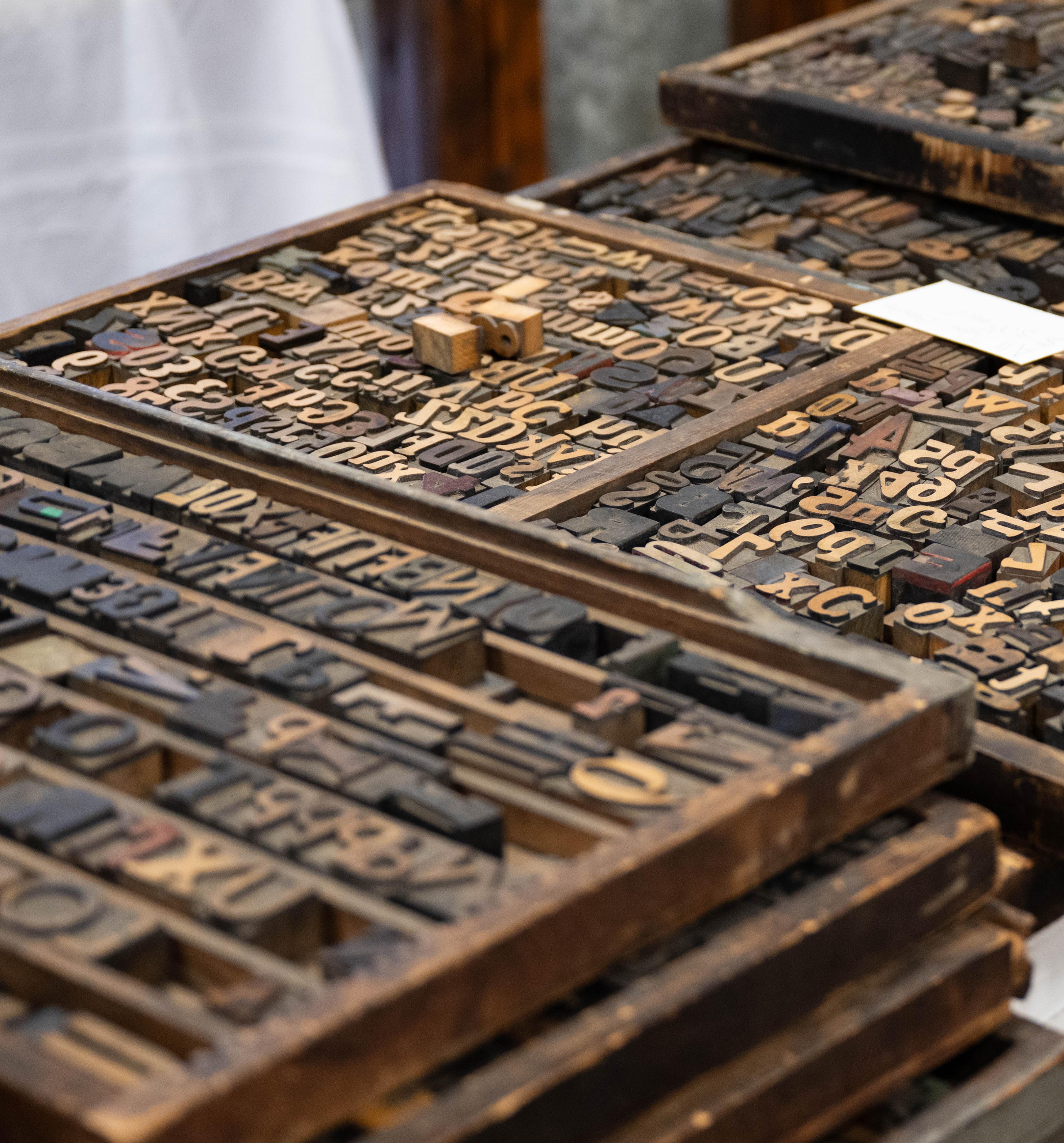





Photos and story
By ANNA KUGLAR Editor
Shoppers of all ages browsed the aisles this weekend of the Acorn Antiques and Vintage Show, held in the Golden Spike Event Center Exhibit Hall at the Weber County Fairgrounds. The three-day event drew steady crowds, with many attendees eager to uncover pieces steeped in history and nostalgia.
Rows of independent sellers and antique shop booths filled the hall, offering everything from mid-century furniture and vintage toys to collectible glassware and timeless clothing pieces. The turnout included a mix of longtime collectors and first-time buyers, each on the hunt for unique treasures from bygone eras. For many, the appeal isn’t just nostalgia — it is also the opportunity to make thoughtful, sustainable purchases that reduce waste, while adding intentional character to their wardrobes and their homes.
Attendees left with treasures in hand and the satisfaction of shopping deliberately, knowing their choices support both history and sustainability.

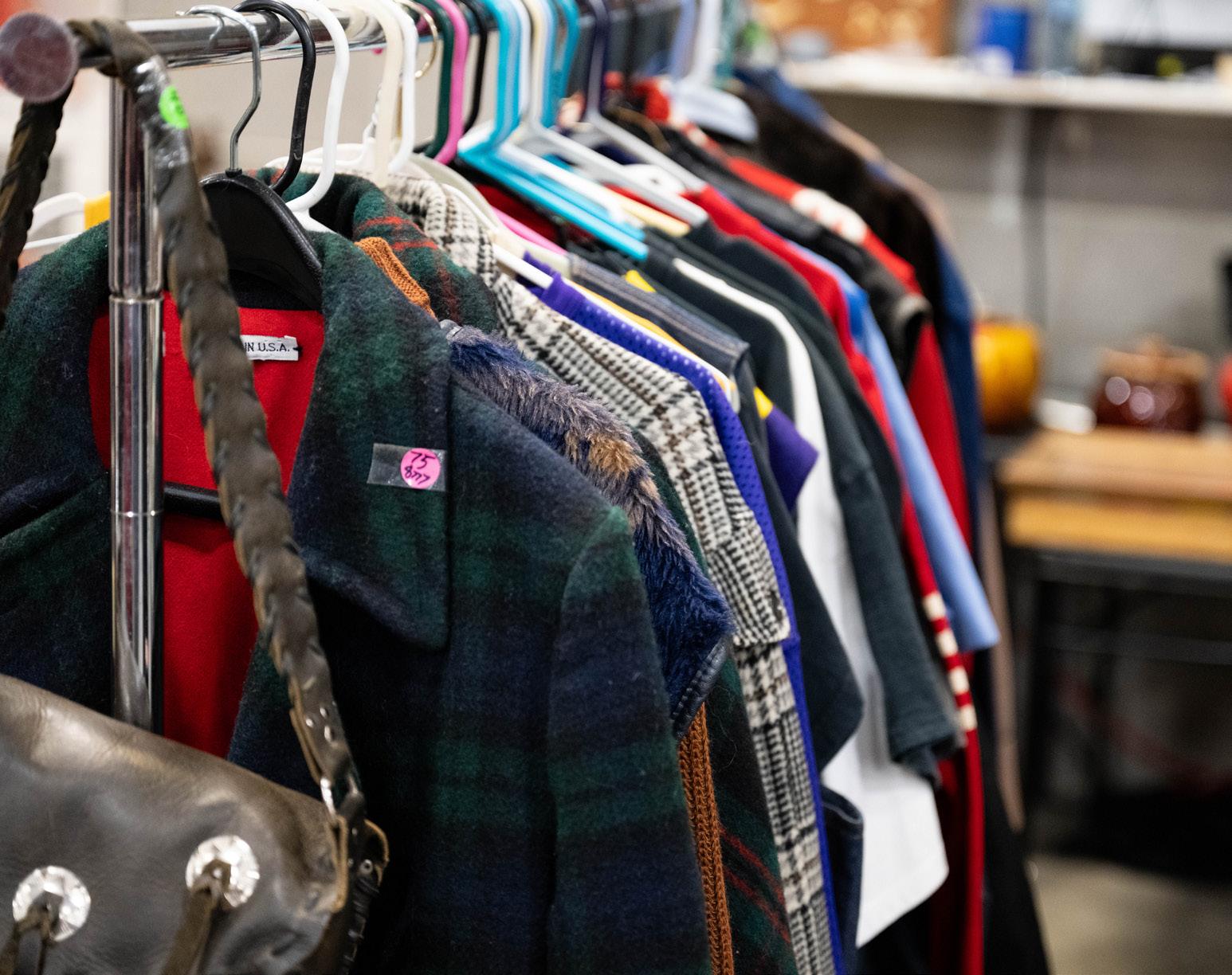
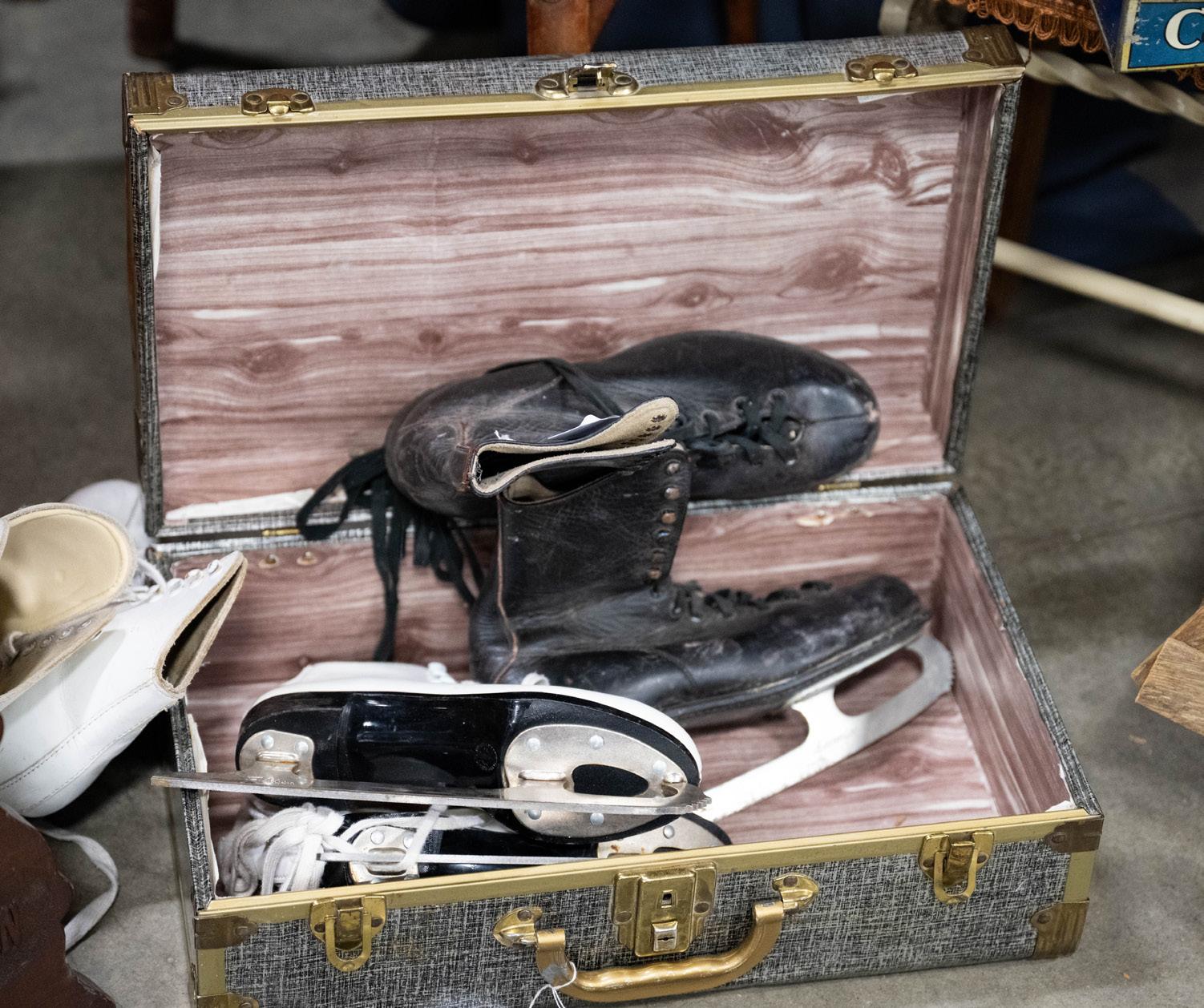

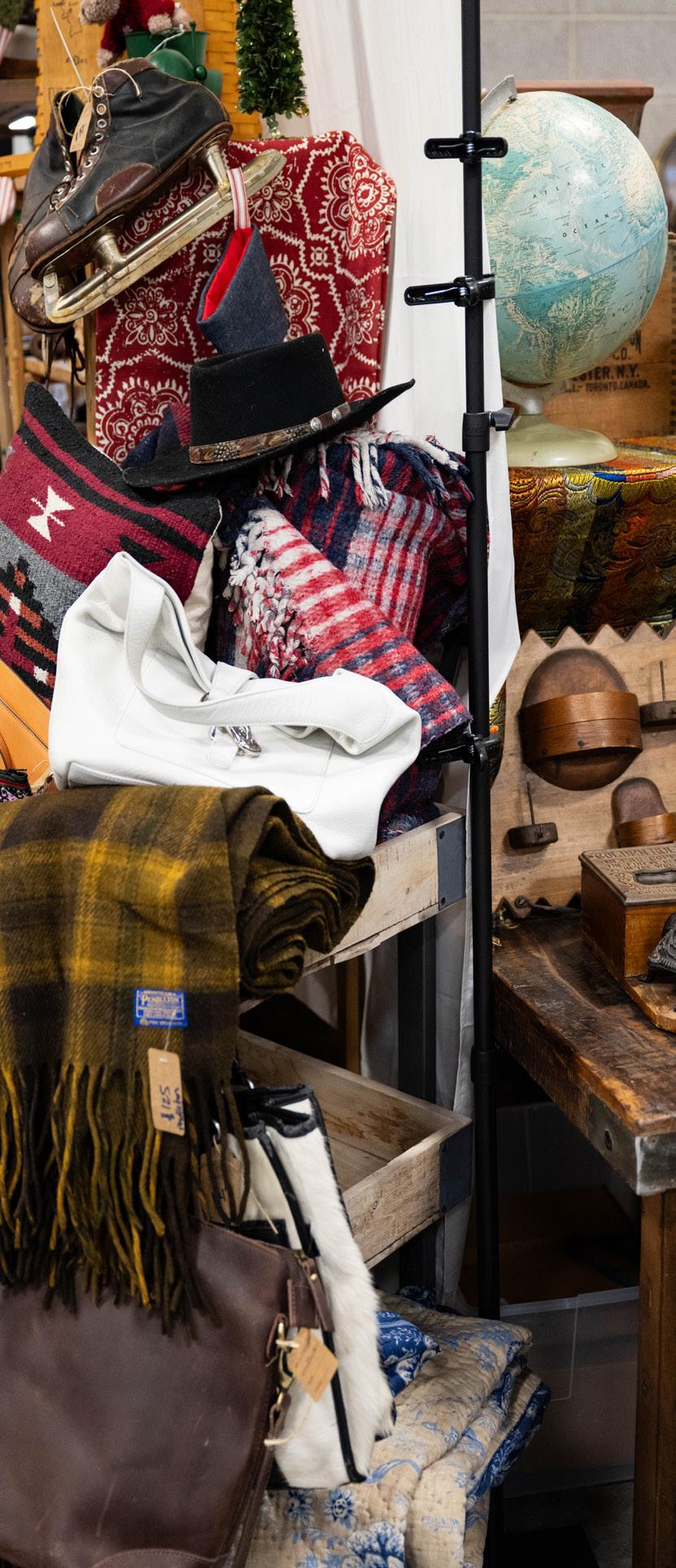

TOP LEFT: A variety of vintage clothing lays on display at an antique vendor’s booth.
TOP RIGHT: Lacey blankets, shawls and table runners, as well as shelves of mirrors and antique perfume bottles at a vendor’s.
BOTTOM LEFT: Vases filled with various antique hat pins lined up at a booth.
MIDDLE TOP: A rustic blue Sky Lark walkable car.
MIDDLE BOTTOM: A vintage trunk repurposed for sale at the Antique Fair.
BOTTOM RIGHT: A coat rack of antique clothing items hung up for shoppers to sort through.
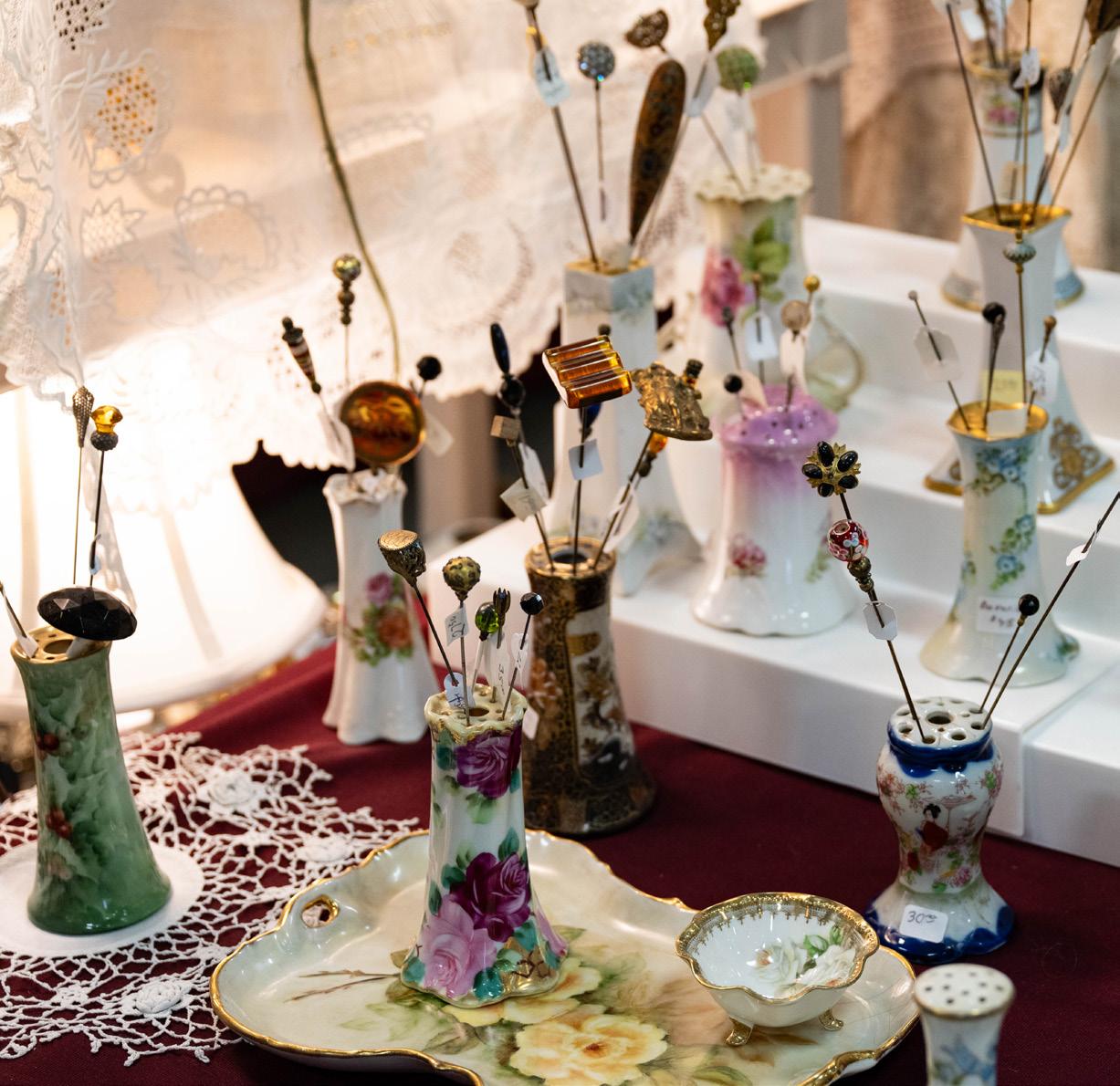


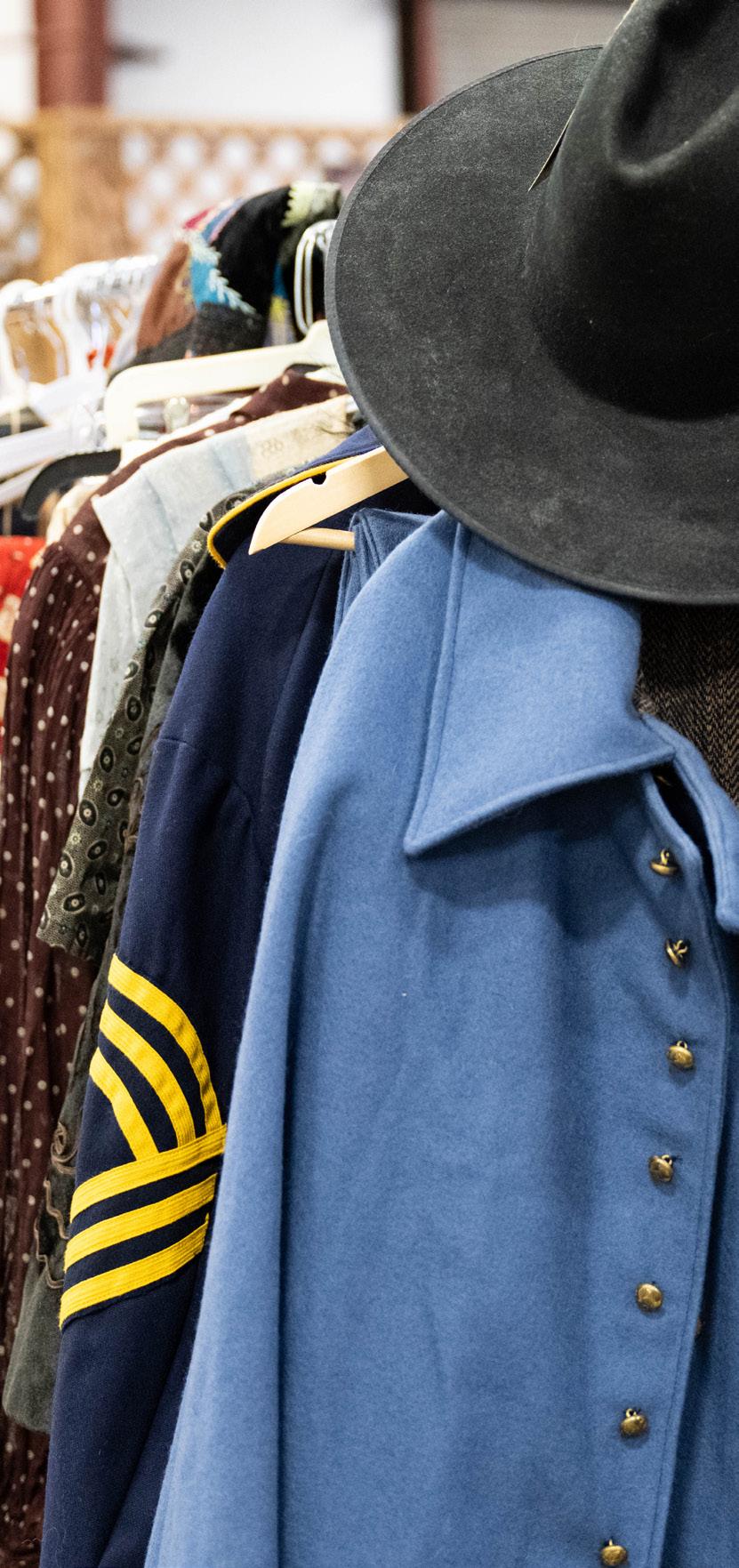
Traducido por
DAVID ROMAN AROS Co-Editor
Fotos e historia
Por ANNA KUGLAR Editora
Compradores de todas las edades recorrieron los pasillos este fin de semana del Acorn Antiques and Vintage Show, celebrado en la sala de exposiciones Golden Spike Center en el Weber County Fairgrounds. El evento, de tres días de duración, atrajo a un público constante, con muchos asistentes deseosos de descubrir piezas impregnadas de historia y nostalgia.
Filas de vendedores independientes y puestos de tiendas de antigüedades llenaban la sala, ofreciendo de todo, desde muebles de mediados de siglo y juguetes antiguos hasta cristalería coleccionable y prendas de vestir atemporales. Entre los asistentes se encontraban tanto coleccionistas veteranos como compradores novatos, todos ellos en busca de tesoros únicos de épocas pasadas.
Para muchos, el atractivo no es solo la nostalgia, sino también la oportunidad de realizar compras sostenibles y meditadas que reducen los residuos, al tiempo que añaden un carácter intencionado a sus armarios y hogares.
Los asistentes salieron con tesoros en las manos y la satisfacción de haber comprado de forma consciente, sabiendo que sus elecciones apoyan tanto la historia como la sostenibilidad.
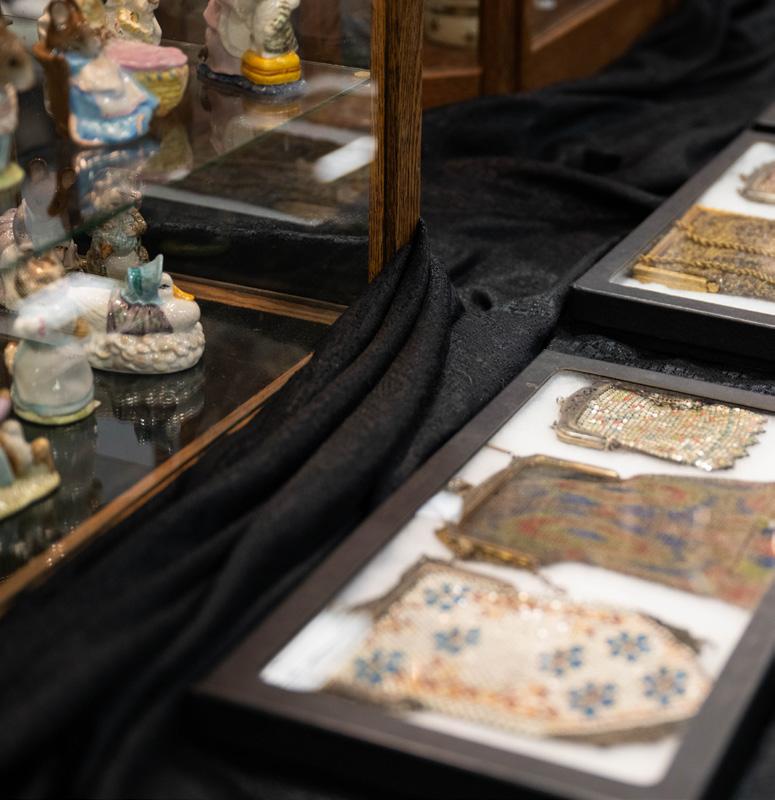
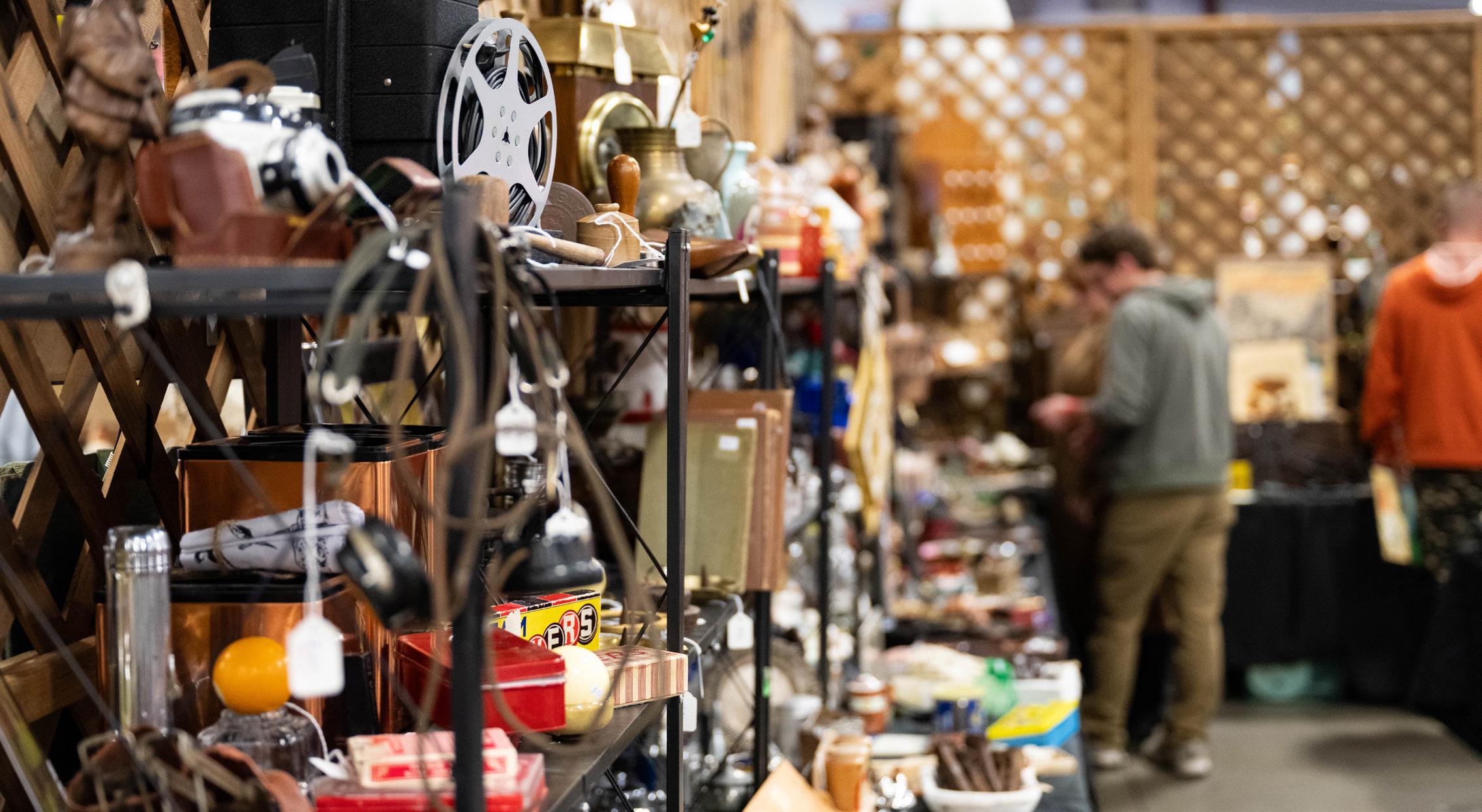
ARRIBA: Los compradores examinan un puesto de antigüedades expuestas en la feria Acorn Antique Fair.
IZQUIERDA ABAJO: En el puesto de un vendedor de antigüedades se exhibían bolsos antiguos con cuentas, colocados en marcos protectores.
MEDIO ABAJO: Una variedad de botellas vacías y carretes de aspecto rústico.
DERECHA ABAJO: Una caja llena de vinilos para que los compradores puedan elegir y comprar.
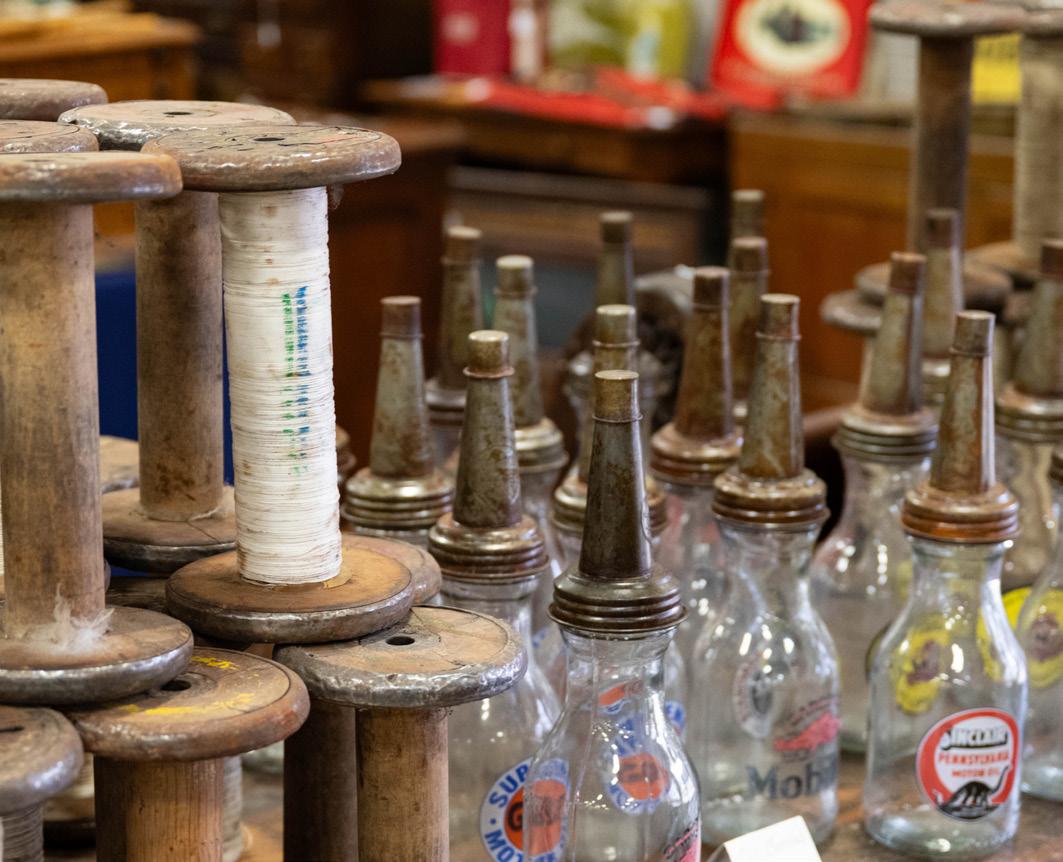
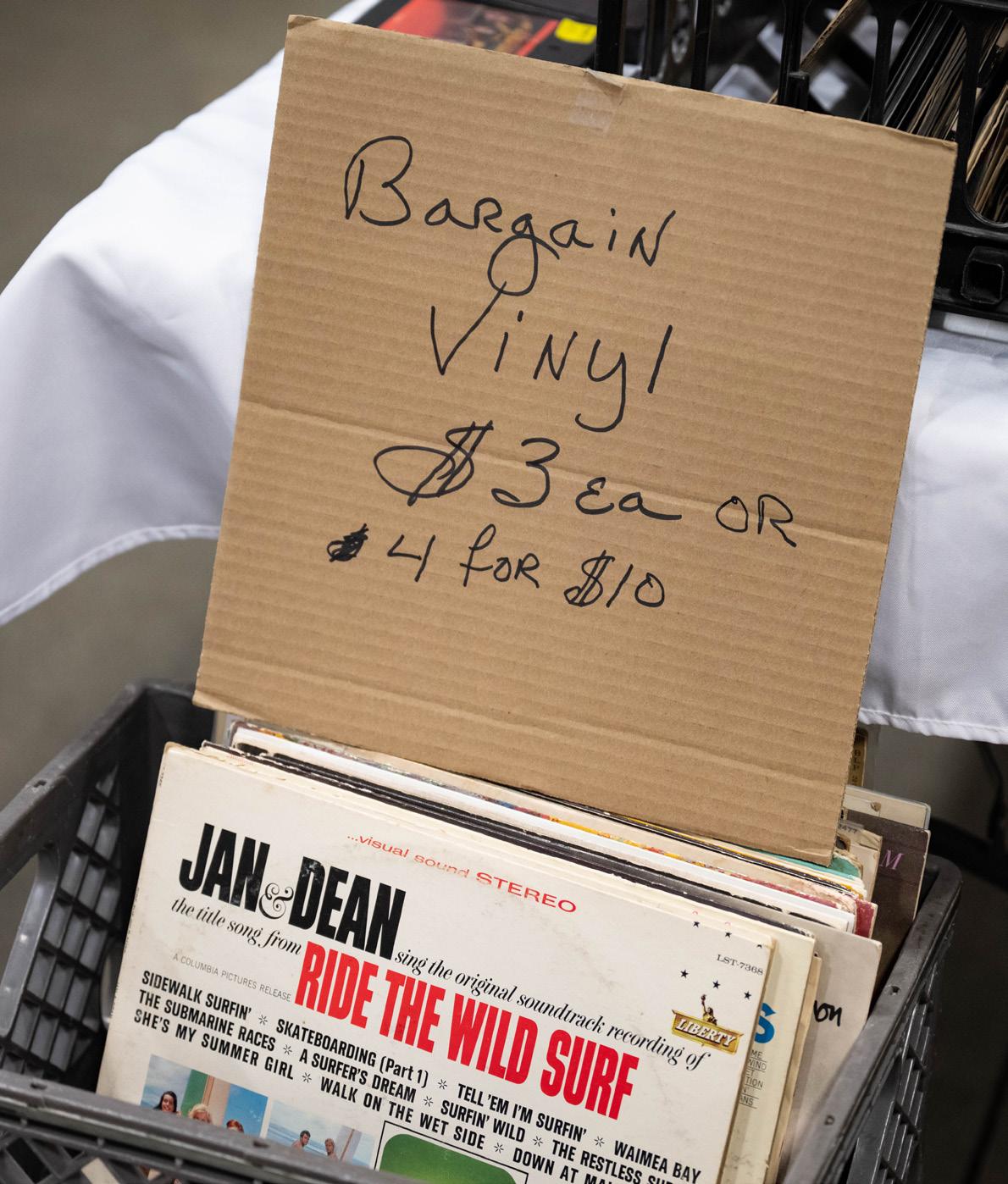
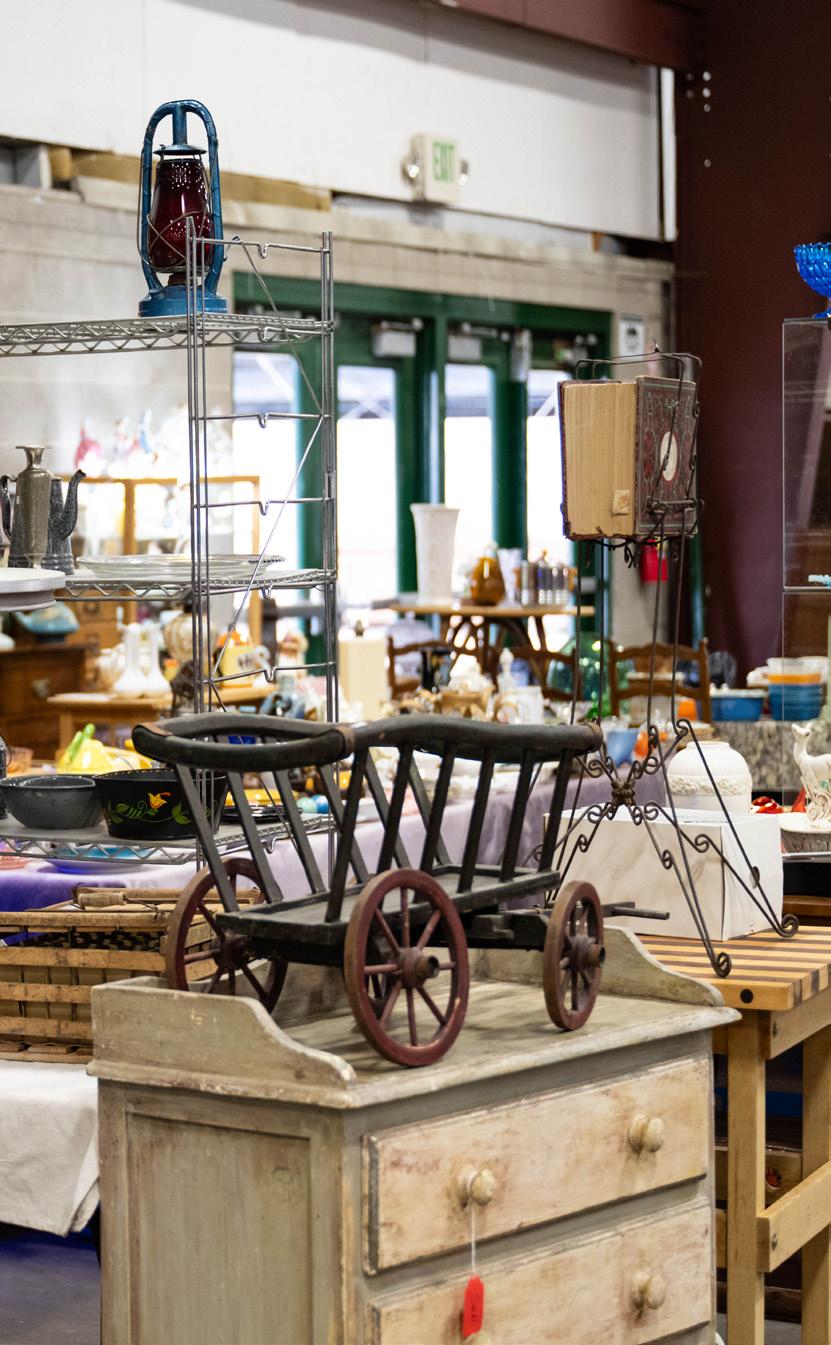
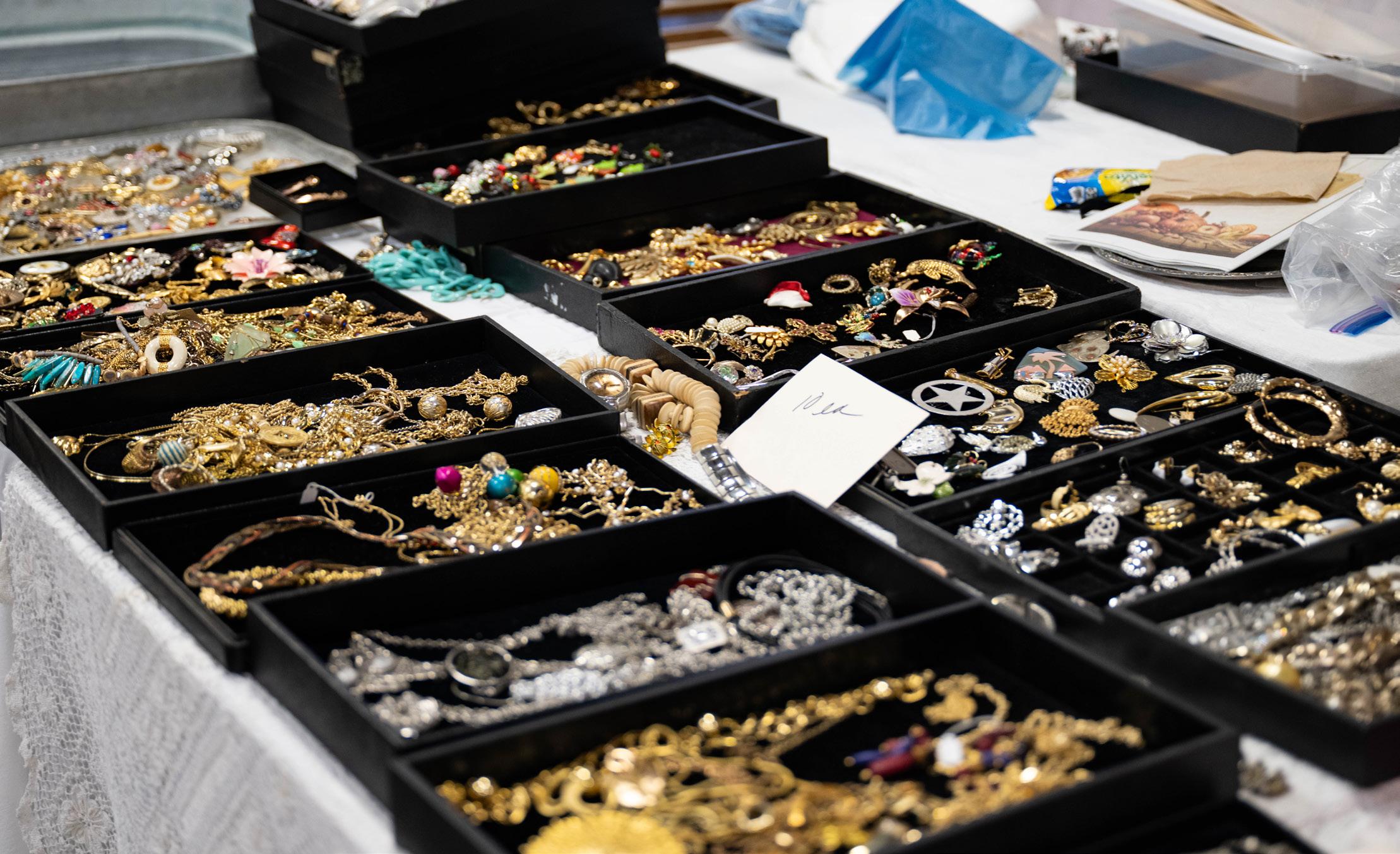


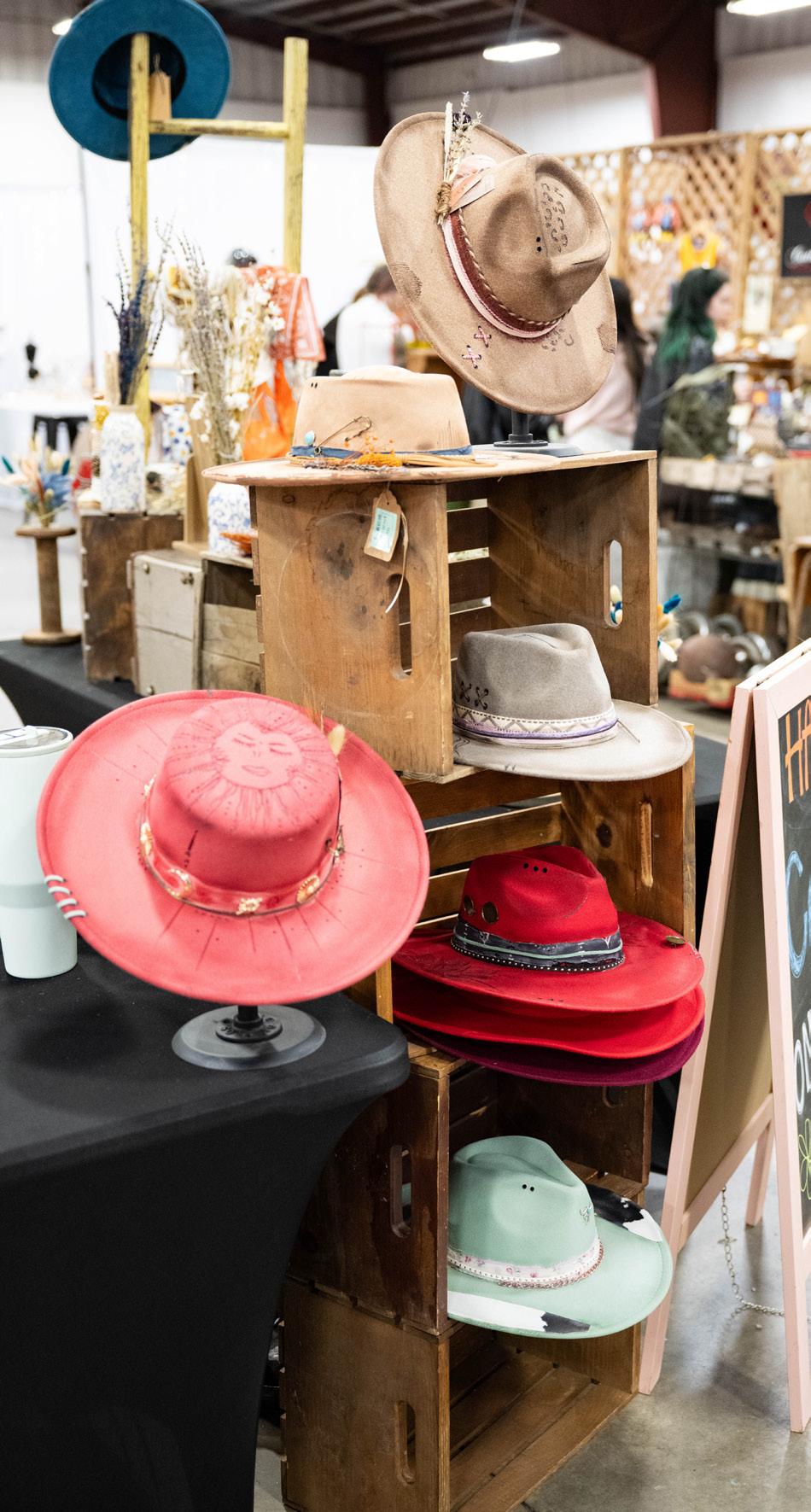
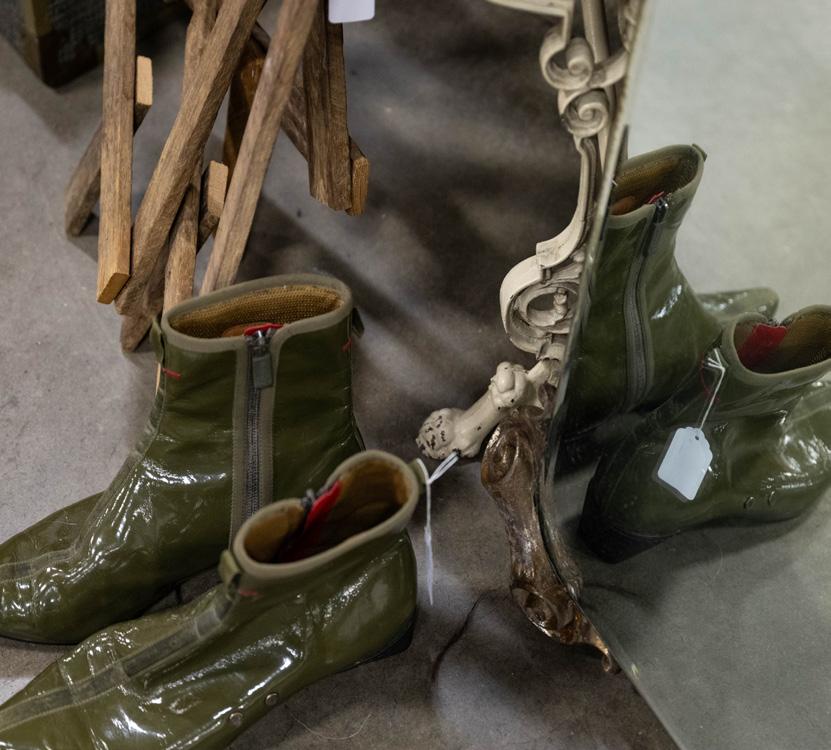
IZQUIERDA ARRIBA: Una variedad de antigüedades únicas a la venta en el puesto de un vendedor.
DERECHA ARRIBA: Cajas llenas de joyas antiguas y broches.
MEDIO IZQUIERDA: Cintas y una variedad de adornos para sombreros se encuentran sobre una mesa para decorar sombreros vintage.
MEDIO: Cajas llenas de sombreros vintage expuestas para que los compradores las adquieran y decoren.
MEDIO DERECHA: Un par de zapatos antiguos con una etiqueta de precio colgando delante de un espejo en la Feria de Antigüedades.
IZQUIERDA ABAJO: Montones de cómics antiguos están dispuestos sobre una mesa para que los compradores los hojeen.
By HANNAH RICHARDS Reporter
It’s that time of year again, when Weber State students celebrate the holidays in their own unique way. Weber State University campus is teeming with a variety of cultures that bring with it specific holiday traditions that can make the seasons bright for all.
Some of these traditions stem from religion, ethnicity or nationality such as Christianity, Nepali or American. Whatever traditions students may celebrate, the thread that binds them together is family.
“It’s something that helps bring everyone together. It’s just something that calms the everyday life, brings some tranquility into everything else that’s going on,” senior Parker Nixon said.
Most students can relate to the traditional
American Christmas celebration that Nixon said his family enjoys. Playing games, baking delicious desserts, wearing matching pajamas and shopping for presents can all typically be part of those Christmas festivities. However, it sounds very similar to another region of the world.
“Most traditions focus on going home, cooking together, visiting relatives and keeping rituals that have been passed down through generations,” said Mallika Ghimire, vice president of the Nepalese Student Association.
According to Ghimire, Nepali holidays are based on ancient Hindu and Buddhist legends and stories. These stories usually are meant to honor the gods and goddesses through heroic or merciful depictions; this is another way in which American and Nepali holiday traditions intersect.

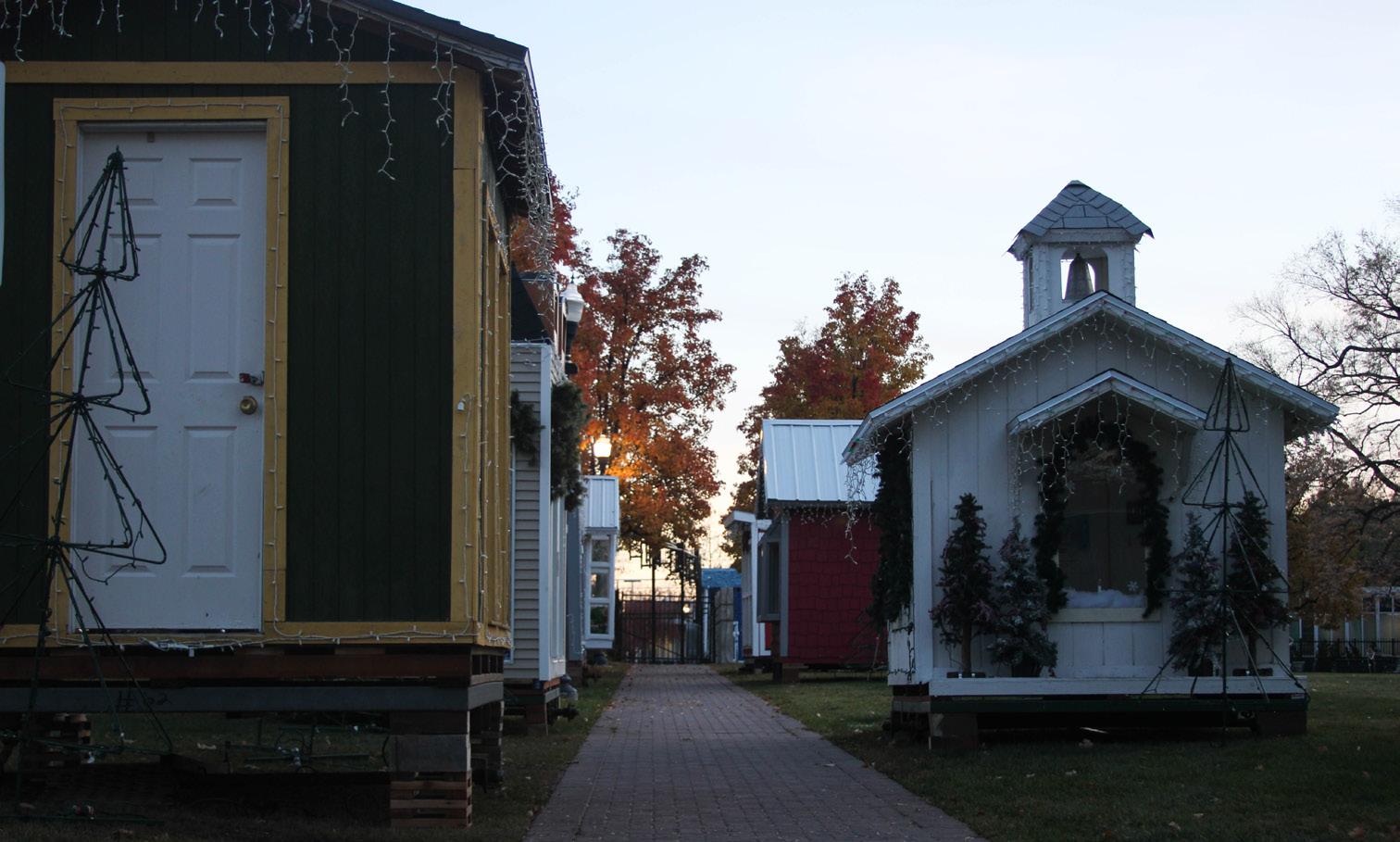
Not only do both cultures focus the festivities around families, both are also influenced by religious rituals. One of the religious rituals included in American Christian Christmas celebrations is the story of the birth of Jesus Christ. With people of hindu and buddhist practices having their own seasonal celebration, celebrating their own gods or goddesses as to that of Christ.
“My celebrations end up becoming a mix of Nepali and American elements, which feels meaningful in its own way,” Ghimire said.
Many of Weber’s international students are unable to travel back home for the holidays this year, which can diminish their excitement for them. However, Ghimire expressed that gathering with other students on campus who have similar holiday traditions helps this time of year feel more like it does at home.
“We make sure to celebrate together with the people close to us, cooking familiar dishes, sharing stories, and keeping small traditions alive,” Ghimire said.
No matter the background or traditions, students can find people to celebrate with at Weber State. Reaching out can make all the difference for someone this year.
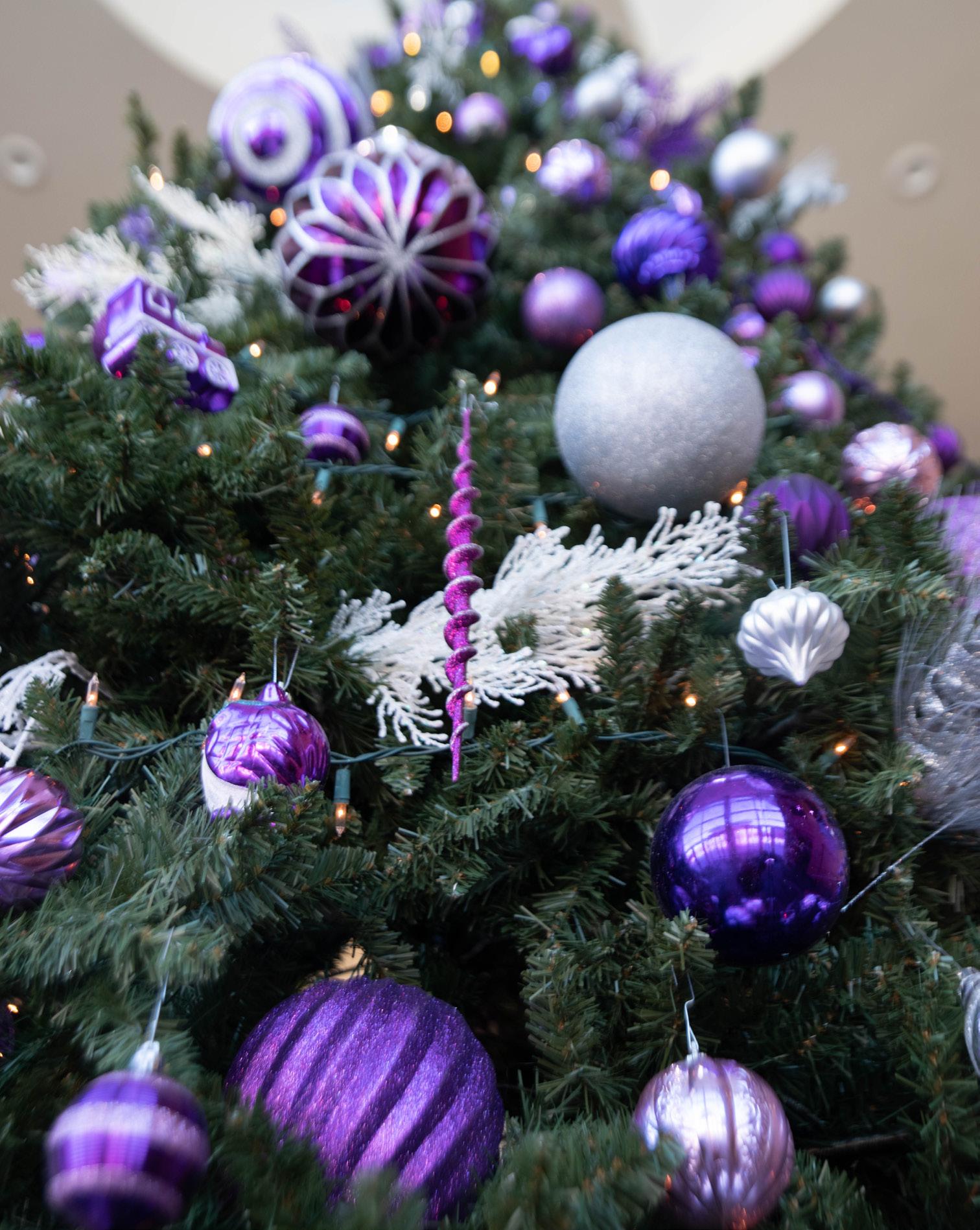
Traducido por LUNA MALAGON SOLORZANO
Traductora
Por HANNAH RICHARDS Reportera
Es ese tiempo del año otra vez, donde los estudiantes de Weber State celebran las festividades a su propia manera. El campus de Weber State está lleno con una variedad de culturas que tienen sus propias festividades especiales, que hacen que las festividades sean brillantes para todos.
Algunas de estas tradiciones se guían por religión, origen etnico o la nacionalidad como el cristianismo, la cultura nepali o la estadounidense. Sean cuales sean las tradiciones que celebran los estudiantes, el hilo conductor que los une es la familia.
Muchos estudiantes pueden sentirse identificados con la típica y tradicional navidad americana quien Nixon dice que su familia está disfrutando, jugando juegos. Comiendo deliciosos postres, usando pijamas a juego y comprando presentes podemos todos ser parte de estas festividades. Sin embargo suena muy similar a otra región del mundo.
“La mayoría de las tradiciones se enfocan en ir a casa, cocinar juntos, visitar a los familiares y mantener tradiciones que han pasado de generación a generación”, dijo Mallika Ghimire, vicepresidente de la asociación de estudiantes nepaleses.
Según Ghimire, las festividades nepaleses se basan en antiguas leyendas e historias hindúes y budistas. Estas historias suelen honrar a los dioses y diosas mediante representaciones he-




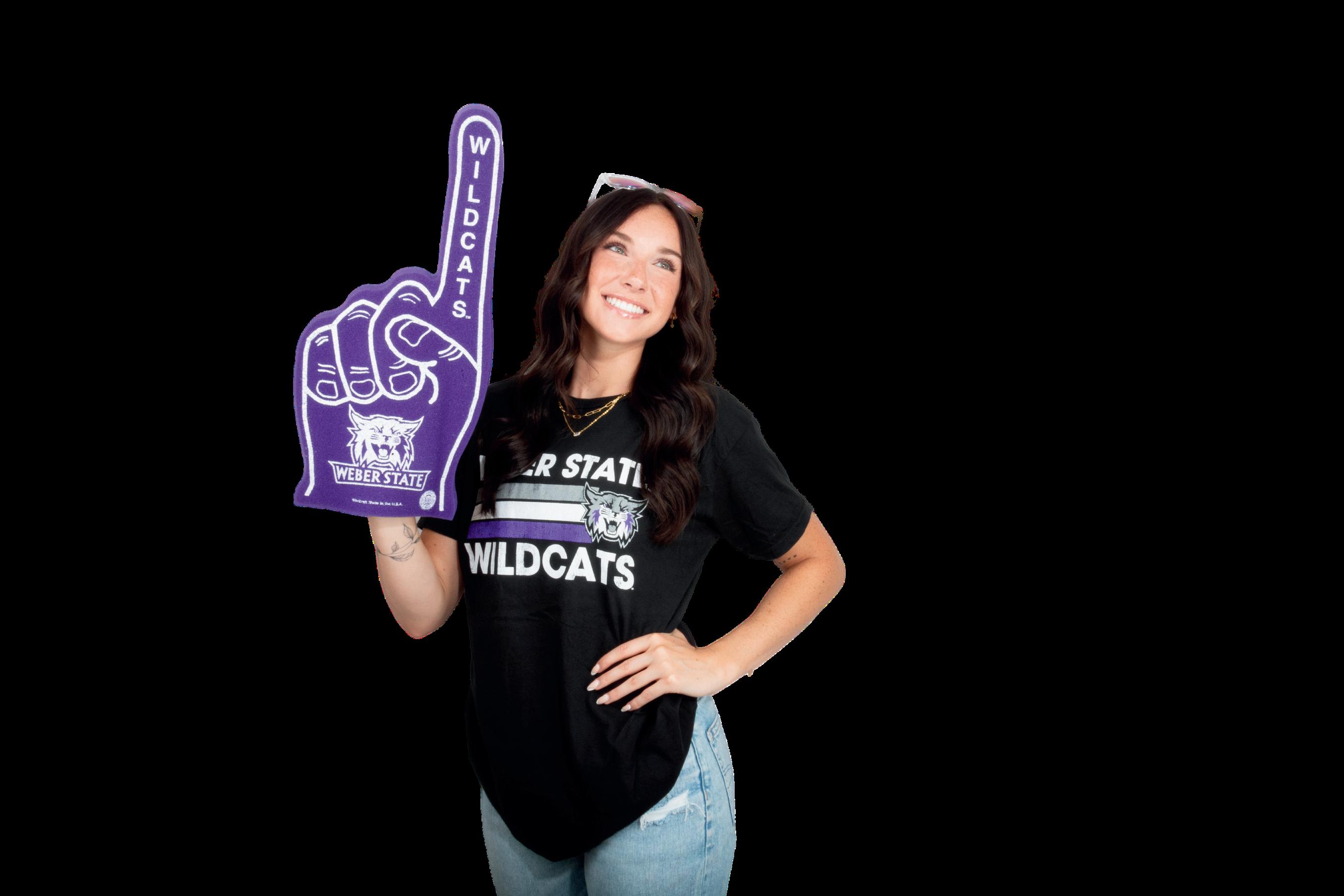

NOV 04

Sunrise Ceremony
Rios Pacheco, a respected Northwestern Shoshone/Kewa Pueblo Spiritual Representative Cultural Analyst and Elder of the tribe will be providing the blessing.
9 a.m. - 9:30 a.m. Stewart Bell Tower, WSU Ogden
Sunrise Ceremony Refreshments/Social

- Collaboration with Northwestern Band of the Shoshone Nation
9:30 a.m. - 10:15 a.m. Shepherd Union 321, WSU Ogden
NOV 05 Hoop Dance Performance
Experience the beauty and cultural significance of this mesmerizing art form with a performance by 9-time Native American Hoop Dance Champion Terry Goedel.
Noon - 12:30 p.m. Shepherd Union Atrium, WSU Ogden
Hoop Dance Presentation
Join 9-time Native American Hoop Dance Champion Terry Goedel for an enlightening dive into the rich history, captivating stories, and cultural significance of hoop dance.
12:40 - 1:40 p.m. Elizabeth Hall Room 229, WSU Ogden
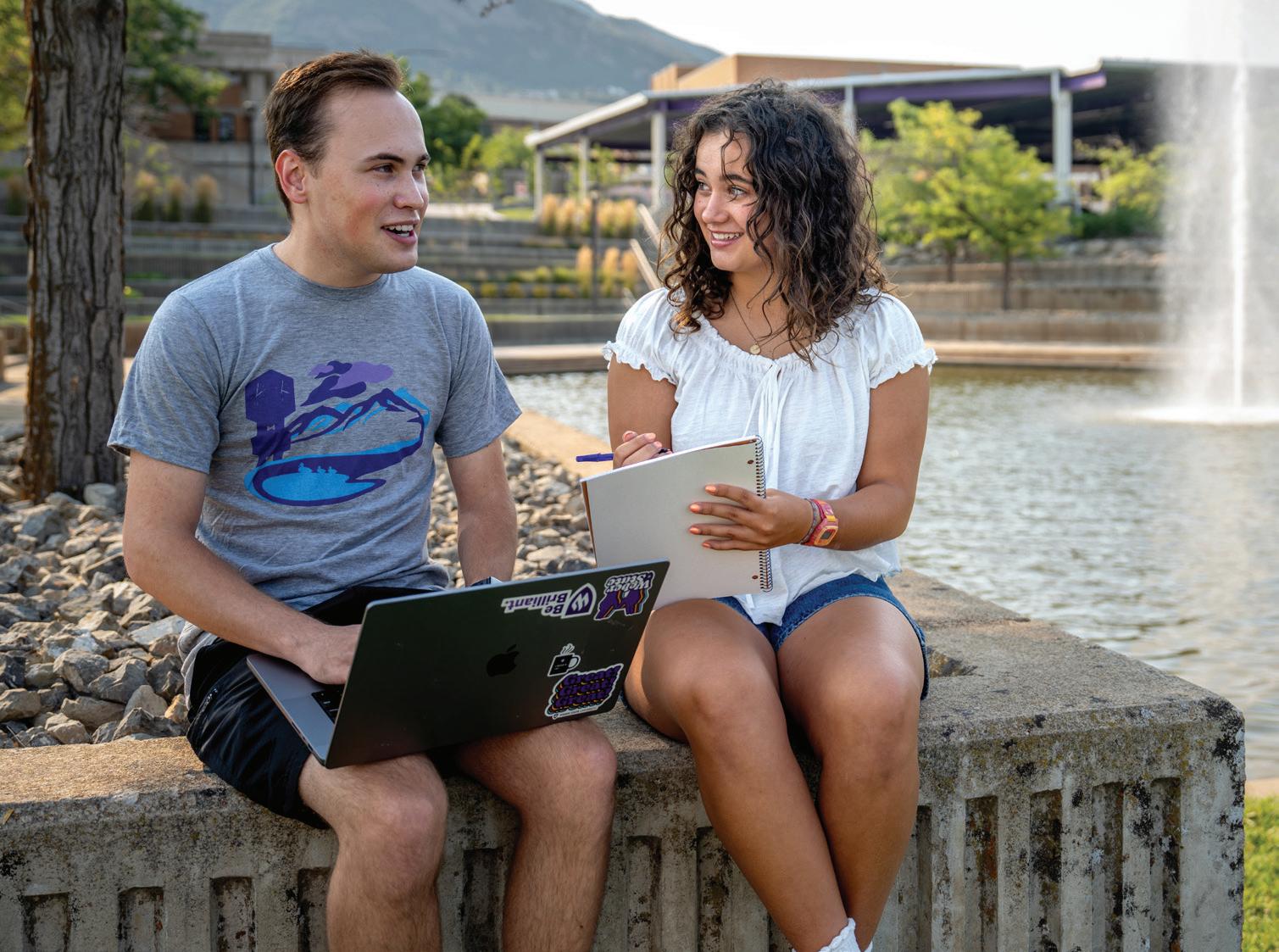
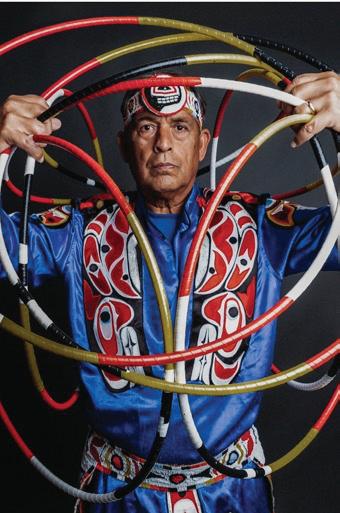
Or join via zoom at weber.edu/student-success-center/native-symposium.html
NOV 12 Film Screening: RUMBLE:TheIndiansWhoRockedtheWorld
RUMBLE traces the melodies, rhythms, and beats of traditional Native music as they took different forms across the spectrum of 20th-century American rock. Food will be provided.
6 - 8 p.m. Hetzel-Hoellein Room 321, Stewart Library, WSU Ogden
NOV 20 Keynote: Beyond the Glittering World
Come celebrate the release of the Indigenous anthology Beyond the Glittering World, edited by Darcie Little Badger, Stacie Shannon Denetsosie, and Kinsale Drake. All three editors will be in conversation about what an anthology like this means—for readers, writers, and future-thinkers.
*Collaboration with the Creative Writing Program, English Department & Friends of the Library
12:30 - 2 p.m. Shepherd Union Wildcat Theater, WSU Ogden

FBI tip
On Nov. 5 around 11:40 a.m., the Weber State University Police Department received a tip from an FBI information sharing hotline. The information regarded an individual engaging in suspicious behavior. The individual had no relationship with Weber, and the tip was only given to WSUPD due to the individual’s proximity to the university.
By HENRY CRAIG Reporter Traducido
por
IVANNA OLACHEA GONZALEZ Traductora
On Nov. 6 about around 4:15 p.m., WSUPD officers were dispatched to the Wildcat Center after the gym staff reported a fight on the basketball court. While on route the officers made contact with the individuals involved near Wildcat Village. Both admitted to being involved in the fight and both refused to press charges. No one was hurt. After being instructed to avoid each other, the case was closed.
Hunters on skyline
On Nov. 7 around 9 a.m., officers were dispatched to an ordinance violation near the
skyline trailhead. A Weber State employee had spotted two hunters in the area. By the time the officers arrived the hunters were nowhere to be found.
On Nov. 7 at 6:22 p.m., WSUPD officers were informed of a complaint involving active stalking. Officers contacted the victim and a friend of theirs and later contacted the subject of the complaint and informed them to avoid contacting the victim in the future.
On Nov. 8 at 9:45 p.m., officers observed an individual pushing a rolling sofa chair through the A12 parking lot. After questioning the individual, officers learned that the chair had been purchased through facebook marketplace, and the individual was using the car wash powerwashers to clean it off, before rolling the chair back to their home.
Por HENRY CRAIG Reportero Share this
del FBI
El 5 de noviembre alrededor de las 11:40 a.m., el Departamento de Policía de la Universidad de Weber State recibió un aviso de la línea directa de intercambio de información del FBI. La información se refería a un individuo involucrado en comportamiento sospechoso. El individuo no tenía relación con Weber y el aviso solo fue dado a WSUPD debido a la proximidad del individuo a la universidad.
Pelea en la cancha de baloncesto
El 6 de noviembre alrededor de las 4:15 p.m., oficiales de WSUPD fueron enviados al Wildcat Center después de que el personal del gym reportara una pelea en la cancha de baloncesto. Mientras estaban en camino, los oficiales hicieron contacto con los individuos involucrados en la pelea cerca de Wildcat Village. Ambos admitieron estar involucrados en la pelea y se negaron a presentar cargos. Nadie resultó herido y después de haber recibido indicaciones de mantenerse alejados, el caso fue cerrado.
Cazadores en skyline
El 7 de noviembre alrededor de las 9 a.m., oficiales fueron enviados a una infracción de
ordenanza cerca del inicio del sendero skyline. Un empleado de Weber State detectó a dos cazadores en el área. Cuando los oficiales llegaron, los cazadores no se encontraban por ninguna parte.
Acoso
El 7 de noviembre a las 6:22 p.m., oficiales de WSUPD fueron informados sobre una denuncia relacionada con acoso activo. Los oficiales contactaron a la víctima y a una amistad suya y posteriormente se pusieron en contacto con el sujeto de la denuncia indicando que debía evitar ponerse en contacto con la víctima en el futuro.
Silla sospechosa
El 8 de noviembre a las 9:45 p.m., oficiales observaron a un individuo empujando y rodando un sillón con ruedas a través del estacionamiento A12. Después de cuestionar al individuo, los oficiales se enteraron que la silla había sido comprada a través de Facebook Marketplace y que el individuo estaba usando la hidrolimpiadora para lavado de autos para limpiar el sillón antes de llevarlo de vuelta a su casa.
Se comparte esta historia en thesignpostwsu.com
By ERIN DROLLETTE Contributor
The entrances to Arches and Canyonlands National Parks were quiet during Oct. 31 through Nov. 2. The typical greeting from a park ranger asking for payments was replaced by a closed window with a printed sign saying, “During this lapse in appropriations, national parks will remain as accessible as possible. We are doing our best to take care of your parks at this time, but some amenities and services may not be available.”
“We do not have anyone available for an interview,” an email from the Office of Public Affairs for the National Park Service stated. Their statement to the public followed and read in part:
“The National Park Service will continue to keep parks as accessible as possible during the lapse in appropriations. Critical functions that protect life, property, and public health will remain in place … We are extremely proud of the dedicated employees and partners who continue to serve the public during this challenging time.”
The contingency plan laid out by the National Park Service in September outlined the services the government was going to fund during the shutdown. These services were limited and included mostly law enforcement and restroom services.
“Our tourism economy is also of vital importance, and we’ve communicated to Interior Secretary (Deb) Haaland our plan to keep Utah’s national parks open,” Gov. Spencer Cox said in a statement through his office, pledging that he would tap into state funds to support the parks beyond what would be covered by federal funds.
According to Ben Cook at Utah’s Office of Tourism, those federal funds did not extend to other services that the state found important, such as the visitor centers. “The state stepped in to fund the visitor centers so that there would be staff there, and people could get information,” Cook said.
The state allocates $8,000 a day to each of the national parks within Utah to keep those visitor centers open. As the weather changes, some of the visitor centers will close as normal, which allows for funds to be reallocated.
The funds generated from tourism at Arches and Canyonlands are a large piece of the economy in Utah. “Ensuring that they are open and accessible is really critical for people whose livelihoods depend on those visitors,” Cook said.
The Office of Tourism has collaborated with nonprofit organizations that help support the park. One of these non-profits is the Utah State Historic Preservation Office. Since 2020, the preservation office has been tasked with building a program specifically designed to mitigate concerns at the parks, including theft, looting, environmental damages and manmade destruction.
“Since that time, we’ve grown the largest
cultural site stewardship program in the country with almost 480 volunteers monitoring sites,” said Ian Wright, Utah public archaeologist at the preservation office.
A memorandum of understanding was signed with Arches National Park, but the government shutdown put a halt to getting volunteers out there. Reports of vandalism at Arches surfaced in early November.
“The last time I checked we got 28 report-
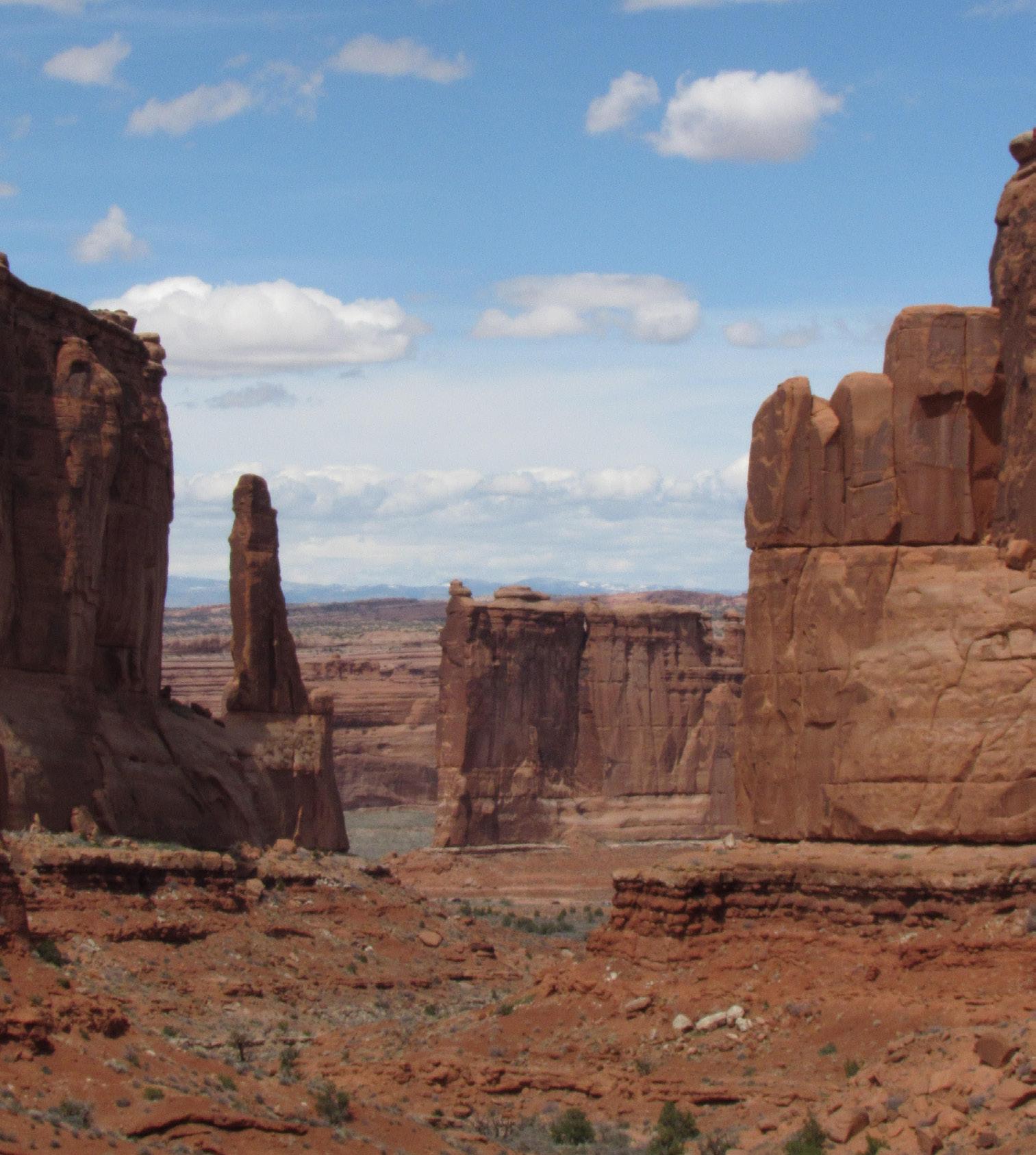
cant, and volunteers are then responsible for reporting these damages to local land management.
“During the shutdown, people are constantly reaching out, asking what they can do, where they can go,” Wright said. “It is amazing to see the community taking action to safeguard not only their own cultural heritage but also the heritage of other people.”
According to Cook, the Office of Tourism
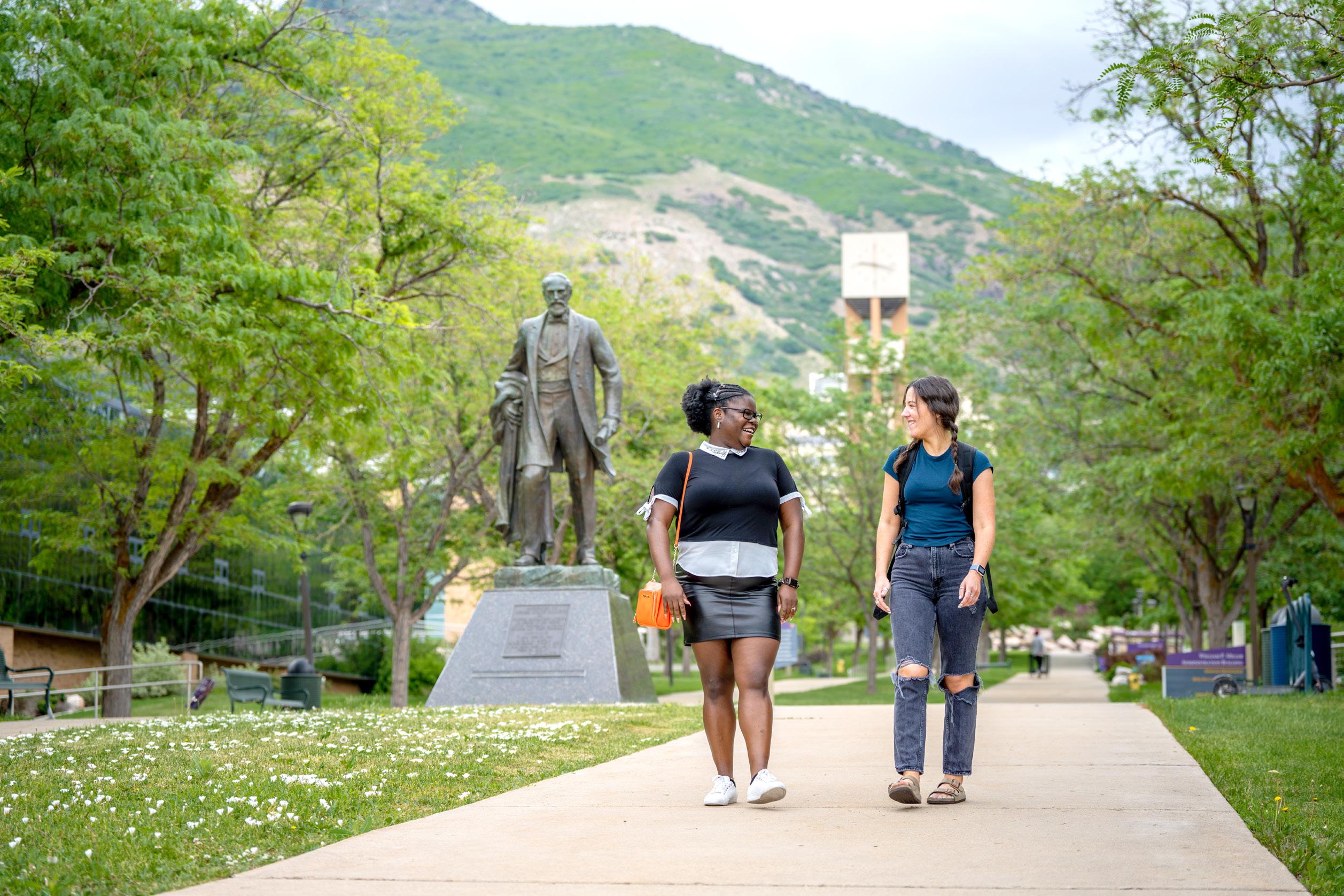

Traducido por LUNA MALAGON SOLORZANO
Traductora
Por ERIN DROLLETE
Contribuidora
Las entradas a los Parques Nacionales Arches y Canyonlands se detuvieron desde octubre 31 hasta noviembre 2. El típico saludo de un guardaparques pidiendo el pago fue sustituido por una ventana cerrada con un cartel impreso que decía: “Durante este lapso en las asignaciones presupuestarias, los parques nacionales permanecerán tan accesibles como sea posible. Estamos haciendo todo lo posible para cuidar sus parques en este momento, pero es posible que algunos servicios e instalaciones no estén disponibles”.
“No tenemos a nadie disponible para una entrevista”, Según un correo de la oficina de Asuntos Públicos del servicio de Parques Nacionales. Su declaración pública decía lo siguiente:
“El servicio del Parque Nacional va a continuar teniendo parques lo más accesible posible durante el tiempo de asignaciones. Funciones críticas que protegen la vida, la propiedad y la salud pública se mantendrán en su lugar… estamos demasiado orgullosos de los empleados dedicados y compañeros que continúan sirviendo al público durante este tiempo difícil”.
El plan de contingencia elaborado por el Servicio de Parque Nacionales en Septiembre describe los servicios que el gobierno iba a financiar durante el cierre. Estos servicios eran limitados e incluían mayormente servicios de policía y de aseo.
“Nuestro turismo económico es también de vital importancia, y le comunicamos al secretario de interior (Deb) Haaland nuestro plan para mantener los parques de Utah abiertos,” dijo el Gob. Spencer Cox en un comunicado desde su oficina, prometiendo que recurriría a los fondos estatales para financiar los parques más allá de lo que cubrirán los fondos federales.
De Acuerdo con Ben Cook en la oficina de turismo en Utah, esos fondos federales no se extienden a otros servicios que el estado piensa que son importantes, como el centro de
visitantes. “El estado intervino para financiar los centros de visitantes, de modo que hubiera personal allí y la gente pudiera obtener información”, dijo Cook.
El estado asigna $8,000 dólares al día a cada uno de los parques nacionales de Utah para mantener abiertos los centros de visitantes. A medida que cambia el tiempo, algunos de los centros de visitantes cerrarán como es habitual, lo que permite reasignar los fondos. Los fondos generados por el turismo en Arches y Canyonlands son una larga pieza para la economía en Utah. “Asegurarnos que están abiertos y son accesibles es realmente crítico para las personas que su estilo depende de estos visitantes”, dijo Cook.
La Oficina de Turismo ha colaborado con organizaciones sin ánimo de lucro que ayudan a mantener el parque. Una de estas organizaciones sin ánimo de lucro es la Oficina de Preservación Histórica del Estado de Utah. Desde 2020, la oficina de preservación tiene la tarea de crear un programa diseñado específicamente para mitigar los problemas en los parques, como robos, saqueos, daños medioambientales y destrucción provocada por el hombre.
“Desde entonces, hemos creado el programa de gestión de sitios culturales más grande del país, con casi 480 voluntarios que supervisan los sitios”, dijo Ian Wright, arqueólogo público de Utah en la oficina de preservación.
Se firmó un memorando de entendimiento con el Parque Nacional Arches, pero el cierre del gobierno impidió que los voluntarios pudieran acudir al lugar. A principios de noviembre surgieron informes de vandalismo en Arches.
“La última vez que lo comprobé, se habían denunciado 28 daños durante el cierre en diferentes zonas del estado”, afirmó Wright. “Estoy seguro de que la gente se aprovechó de saber que había menos personal y menos ojos vigilando”.
Los daños van desde leves hasta muy importantes, y los voluntarios son los responsables de informar de ellos a la administración local.
“Durante el cierre, la gente se pone en contacto constantemente para preguntar qué pueden hacer y adónde pueden ir”, dijo Wright. “Es increíble ver cómo la comunidad
toma medidas para salvaguardar no sólo su propio patrimonio cultural, sino también el patrimonio de otras personas”.
Según Cook, la Oficina de Turismo tiene en cuenta que muchos visitantes de los parques provienen de todo el mundo. “Estamos haciendo lo correcto por los visitantes, estamos haciendo lo correcto por las comunidades locales y estamos tratando de hacer lo correcto por los propios parques”, dijo Cook sobre las contribuciones que el estado ha hecho a los parques. “Creo que es un gran ejemplo de cómo Utah realmente da un paso al frente para liderar de una manera realmente única”.
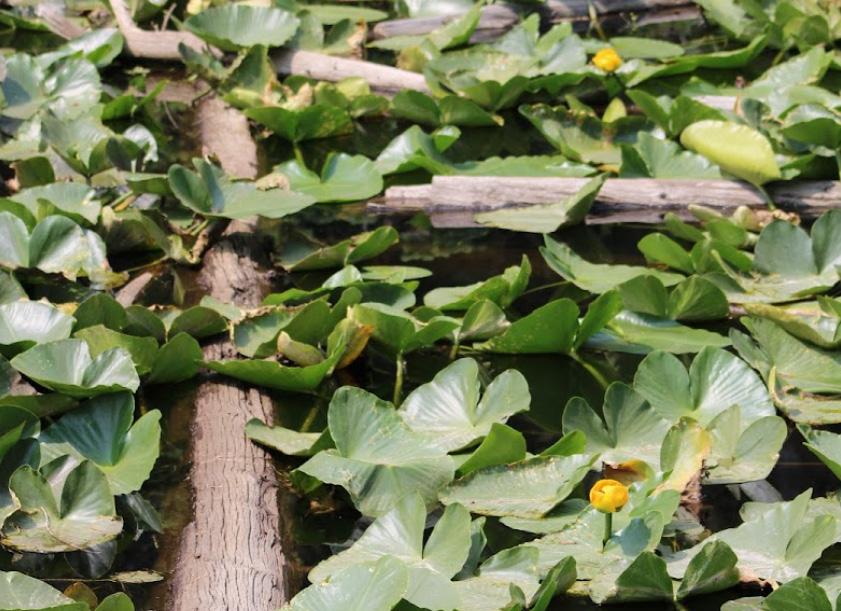
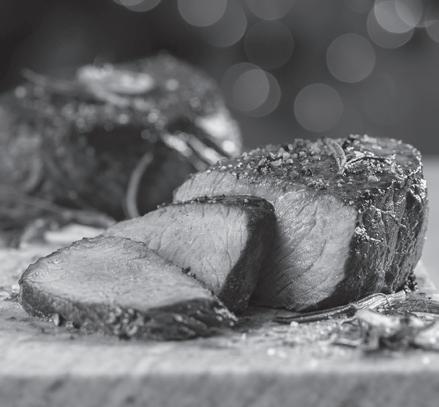




By GAVIN NELSON Editor
The Weber State University football team traveled to Pocatello, Idaho, to face its rival, Idaho State University, in the 66th meeting between the two schools.
The Bengals beat the Wildcats in 2024 for the first time since 2014 and the first time in Ogden since 1984, but the Wildcats looked to bring the Train Bell Trophy back to Ogden.
However, that wouldn’t happen for the Wildcats, as they were defeated 31–3 by the Bengals.
This game was different from others for Weber, after Head Coach and Offensive Coordinator Mickey Mental was fired on Nov. 10. Associate Head Coach Brent Myers was then promoted to serve as interim head coach for the final two games of the season, while tight ends coach Robert Conley took over the interim offensive coordinator position.
The game started quickly for the Bengals, with a five-play, 75-yard touchdown drive to take the early 7–0 lead after a 2-yard rushing touchdown by quarterback Jordan Cooke.
The Wildcats’ first drive went the opposite, after an incomplete catch, a sack, a holding call, followed by a screen play that failed to make it to the first-down marker, causing the Wildcats to punt the ball away.
The teams traded punts before ISU drove down to the Weber 2-yard line, but were stopped on fourth down.
Weber drove to the Idaho State 49-yard line, but was forced to punt to end the quarter. This led to ISU driving down to the Weber 3-yard line, and then finishing it off with a 3-yard touchdown run by Dason Brooks to make it 14–0.
The teams traded punts again, followed by another three-and-out by the Wildcats.
On the following drive, Cooke found Damien Morgan for a 17-yard touchdown, but it was called back due to an offensive pass interference. Two plays later, Cooke found Morgan again for a 29-yard touchdown pass to make it 21–0.
Weber drove down to the Idaho 40-yard line but was stopped on fourth-and-one. Idaho State then drove down to the Weber 32-yard line and attempted a 49-yard field goal, but missed it short, keeping the score 21–0 at the half.
At the beginning of the third quarter, the teams traded three-and-outs, and then We-
ber had a good drive going, with quarterback Dijon Jennings finding A.J. Jayroe for a first down. However, after a sack resulted in a 10yard loss, Weber was unable to reach the firstdown marker and was forced to punt.
The Bengals drove to the Wildcat 37-yard line but were stopped on third. They went for it on fourth down, and Cooke reversed field to get the first down for the Bengals. But after an incomplete pass on third down later in the drive, the Bengals attempted a 48-yard field goal, which kicker Trey Sinatra hit to make it 24–0.
Weber had another three-and-out, and Idaho followed that up with a 67-yard drive culminating in a 13-yard pass from Cooke to Ian Duarte to make it 31–0.
Weber drove down to the ISU eight-yard line but was stopped on third down. This brought out kicker Sloan Calder, who hit the 25-yard field goal to make the score 31–3 and deny the Bengals the shutout.
The Bengals then took the ball and drove down to their own 43-yard line, but were forced to punt with less than eight minutes left in the game.
The Wildcats had another three-and-out, which the Bengals were then able to use to run the clock down, ultimately securing a 31–3 win.
This marked the first time since 1984 that
the Bengals have won back-to-back games against the Wildcats, and only their third win since 2002.
“We felt pretty good going in, but we just weren’t as sufficient an offense as we’d liked to be,” Myers said. “We have a week left, and my goal is to team them to continue working … They got at least one more game in Weber
State, depending on their scenario. We want to win for our seniors.”
The Wildcats fell to 3-wins and 8-losses on the year, with a 1-win, 5-loss record in Big Sky Conference play. They finish the season at home against the Northern Arizona University Lumberjacks on Nov. 22, at 1 p.m.

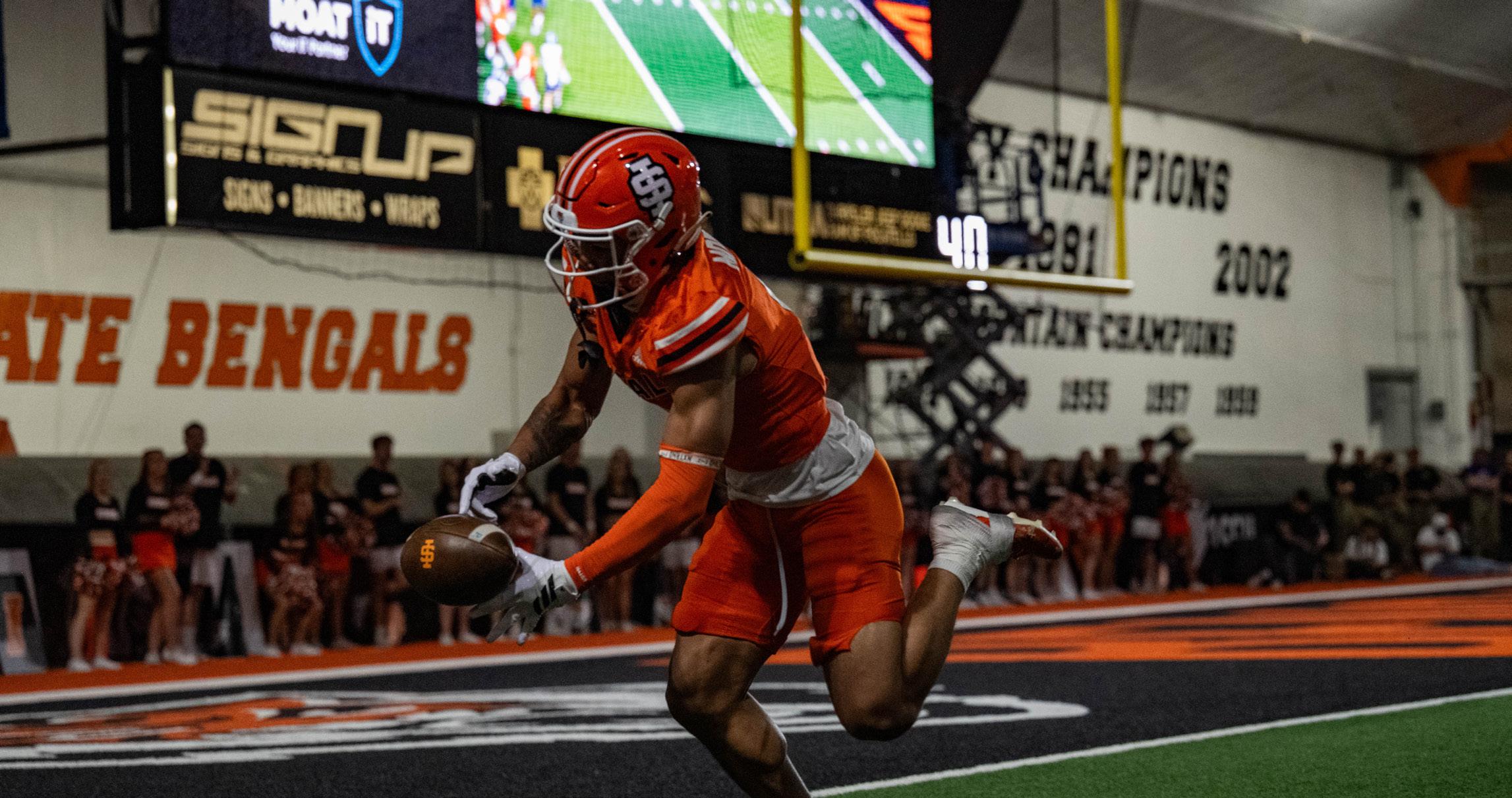
Traducido por VICTORIA HERNANDEZ
Co-editora
Por GAVIN NELSON Editor
El equipo de fútbol americano de la Universidad de Weber State viajó a Pocatello, Idaho, para enfrentarse a su rival, la Universidad de Idaho State, en el 66.º encuentro entre ambas universidades.
Los Bengals derrotaron a los Wildcats en el 2024 por primera vez desde el 2014 y la primera vez en Ogden desde 1984, pero los Wildcats querían traer el Old Train Bell Throphy de vuelta a Ogden.
Sin embargo, eso no pudo pasar para los Wildcats, ya que fueron derrotados 31–3 por los Bengals.
Este partido fue diferente a los demás para Weber, después de que el head coach y coordinador ofensivo Mickey Mental fuera despedido el 10 de noviembre. El head coach suplente Brent Myers fue ascendido para ocupar el puesto de head coach interino durante los últimos partidos de la temporada, mientras que el entrenador de tight ends Robert Conley asumió el cargo de coordinador ofensivo interino.
El partido comenzó rápidamente para los
Bengals, con una jugada de 75 yardas en cinco jugadas que les dio una ventaja inicial de 7-0 tras un touchdown de 2 yardas del quarterback Jordan Cooke.
La primera jugada de los Wildcats fue todo lo contrario, tras una recepción incompleta, un sack, una falta por holding y una jugada de pantalla que no consiguió llegar a la yarda de primer down, lo que obligó a los Wildcats a despejar el balón.
Los equipos intercambiaron punts antes de que ISU avanzara hasta la yarda 2 de Weber, pero fueron detenidos en la cuarta oportunidad.
Weber avanzó hasta la yarda 49 de Idaho State, pero se vio obligado a patear para terminar el cuarto. Esto llevó a ISU a avanzar hasta la yarda 3 de Weber y luego rematar con un touchdown de 3 yardas de Dason Brooks para poner el 14-0.
Los equipos intercambiaron punts de nuevo, seguidos de otro three-and-out de los Wildcats.
En la siguiente jugada, Cooke encontró a Damien Morgan para un touchdown de 17 yardas, pero fue anulado debido a una interferencia ofensiva en el pase. Dos jugadas más tarde, Cooke volvió a encontrar a Morgan para un pase de touchdown de 29 yardas que puso el marcador en 21-0.
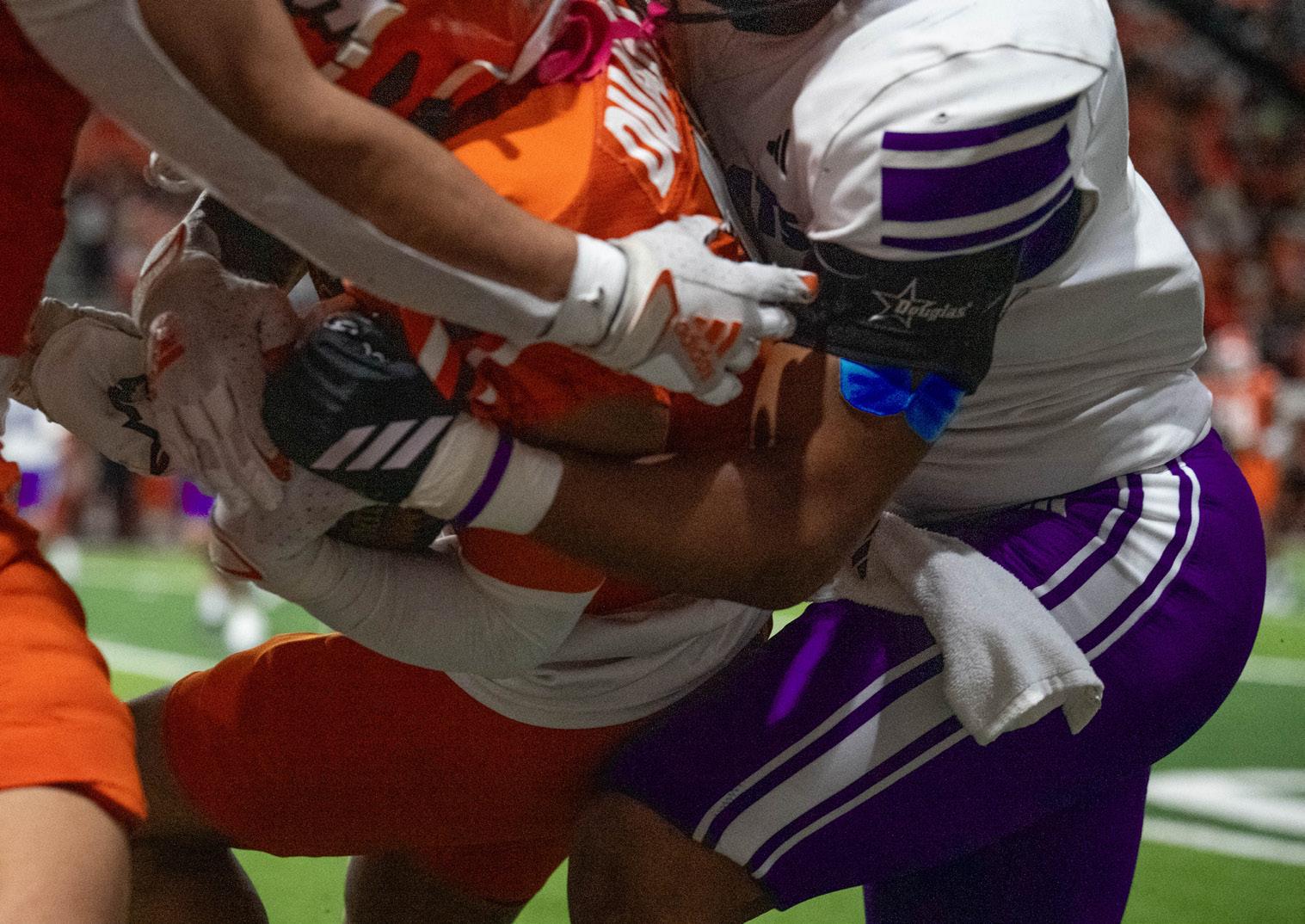
Weber avanzó hasta la yarda 40 de Idaho, pero fue detenido en cuarta y una. Idaho State avanzó entonces hasta la yarda 32 de Weber e intentó un field goal de 49 yardas, pero falló por poco, manteniendo el marcador en 21-0 en halftime.
Al comienzo del tercer cuarto, los equipos intercambiaron tres jugadas sin anotar, y luego Weber tuvo una buena jugada, con el quarterback Dijon Jennings encontrando a A.J. Jayroe para un primer down. Sin embargo, tras un sack que supuso una pérdida de 10 yardas, Weber no pudo alcanzar la marca de primer down y se vio obligado a patear.
Los Bengals avanzaron hasta la yarda 37 de los Wildcats, pero fueron detenidos en tercera. Lo intentaron en cuarta y Cooke revirtió el campo para conseguir el primer down para los Bengals. Pero tras un pase incompleto en tercera oportunidad más adelante en la jugada, los Bengals intentaron un gol de campo de 48 yardas, que el pateador Trey Sinatra acertó para poner el 24-0.
Weber tuvo otra jugada de tres y fuera, e Idaho siguió con una jugada de 67 yardas que culminó con un pase de 13 yardas de Cooke a Ian Duarte para poner el 31-0.
Weber avanzó hasta la yarda 8 de ISU, pero fue detenido en tercera oportunidad. Esto
sacó al pateador Sloan Calder, quien acertó el gol de campo de 25 yardas para poner el marcador 31-3 y negarles la blanqueada a los Bengals.
Los Bengals tomaron entonces el balón y avanzaron hasta su propia línea de 43 yardas, pero se vieron obligados a patear con menos de ocho minutos por jugar.
Los Wildcats tuvieron otra serie de tres jugadas sin anotar, lo que los Bengals aprovecharon para agotar el tiempo y asegurar finalmente una victoria por 31-3.
Esta fue la primera vez desde 1984 que los Bengals ganaban dos partidos consecutivos contra los Wildcats, y solo su tercera victoria desde 2002.
“Nos sentíamos bastante bien al entrar, pero no fuimos tan eficaces en ataque como nos hubiera gustado”, dijo Myers. “Nos queda una semana y mi objetivo es que el equipo siga trabajando... Les queda al menos un partido más en Weber State, dependiendo de su situación. Queremos ganar para nuestros veteranos”.
Los Wildcats terminaron con 3 victorias y 8 derrotas en el año, con un récord de 1 victoria y 5 derrotas en la Big Sky Conference. Terminan la temporada en casa contra los Lumberjacks de la Universidad del Norte de Arizona el 22 de noviembre a la 1 p. m.
IZQUIERDA: Un jugador Wildcat taclea a un Bengal.
DERECHA: El equipo de Weber State University hace una jugada defensiva en contra de Idaho State University.
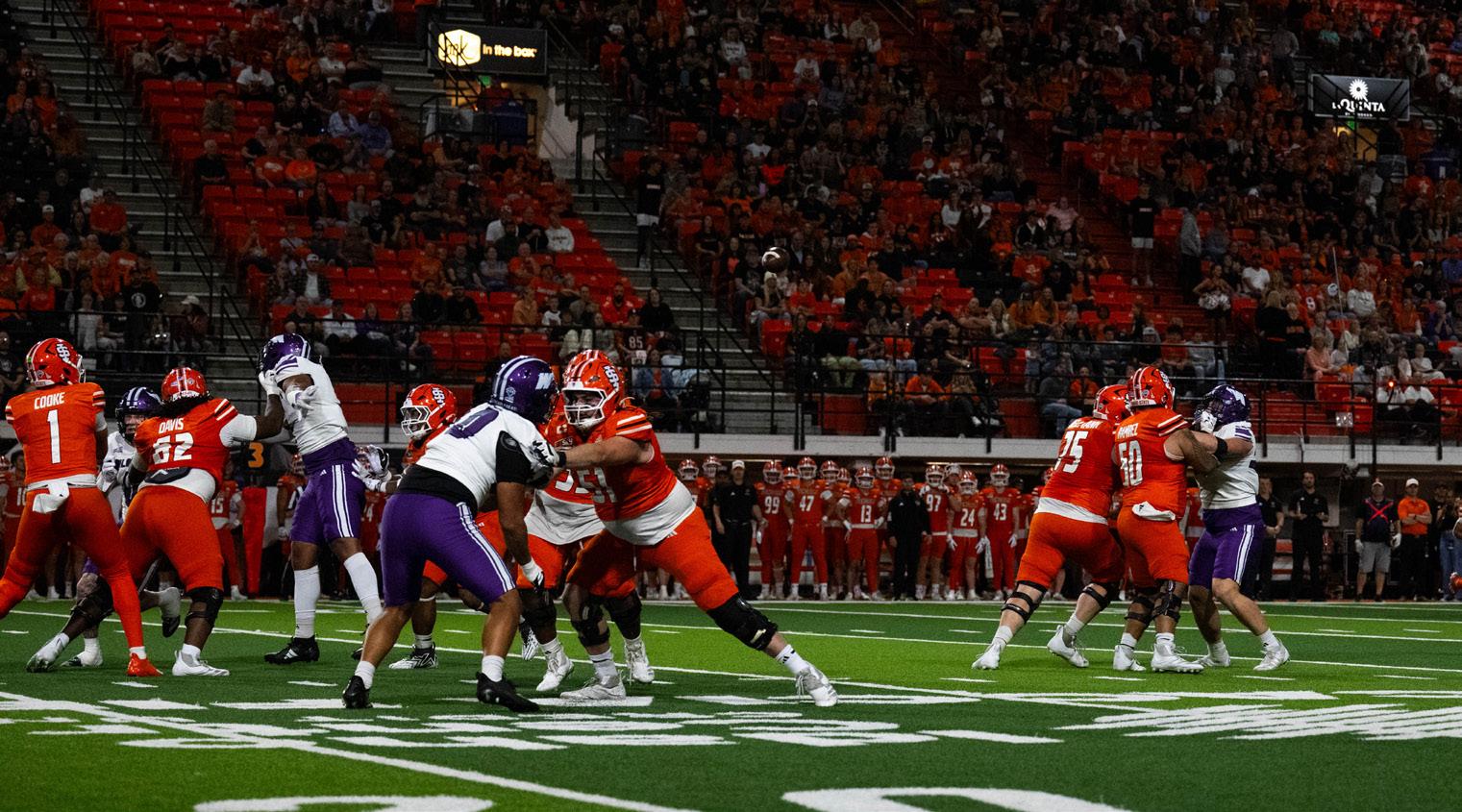
By BRAYSON BROWN Asst. Editor
Weber State University men’s and women’s cross-country teams participated in the NCAA Mountain Regionals, with one Wildcat advancing to the NCAA championships.
The women’s team placed No. 13 overall with a score of 370 in the 6k race. The University of New Mexico took first place with a score of 45. The top runner for the Wildcats was Hailey Low, who placed No. 40 in the race with a time of 21:43.3. Lydia Felix placed No. 62 with a time of 22:14.7. For the Wildcats, this was their last race of the season.
For the men’s team, New Mexico was the winning team, yet again, with a score of 37 in the 10k race. Weber State placed No. 7 with a score of 215. New Mexico took four of the top 10 places individually, with Habtom Samuel taking first. The Wildcats’ top performer was star runner Peter Visser, who placed No. 8
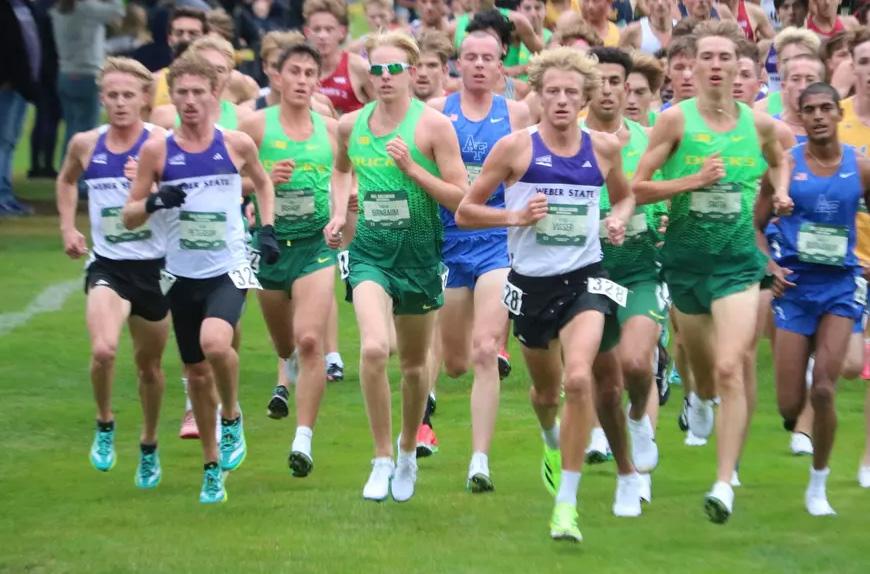
overall in a race of over 118 racers. Visser had a time of 30:13.1, only .7 seconds behind the 7th place runner, Collins Kiprotich from New Mexico. Jacob Peterson was next for the Wildcats at No. 44 with a time of 31.29.0.
Visser will now represent Weber State on the biggest stage at the NCAA championships, which will take place on Nov. 22 in Columbia, Missouri. This is the third straight year he will participate in the race. Share this
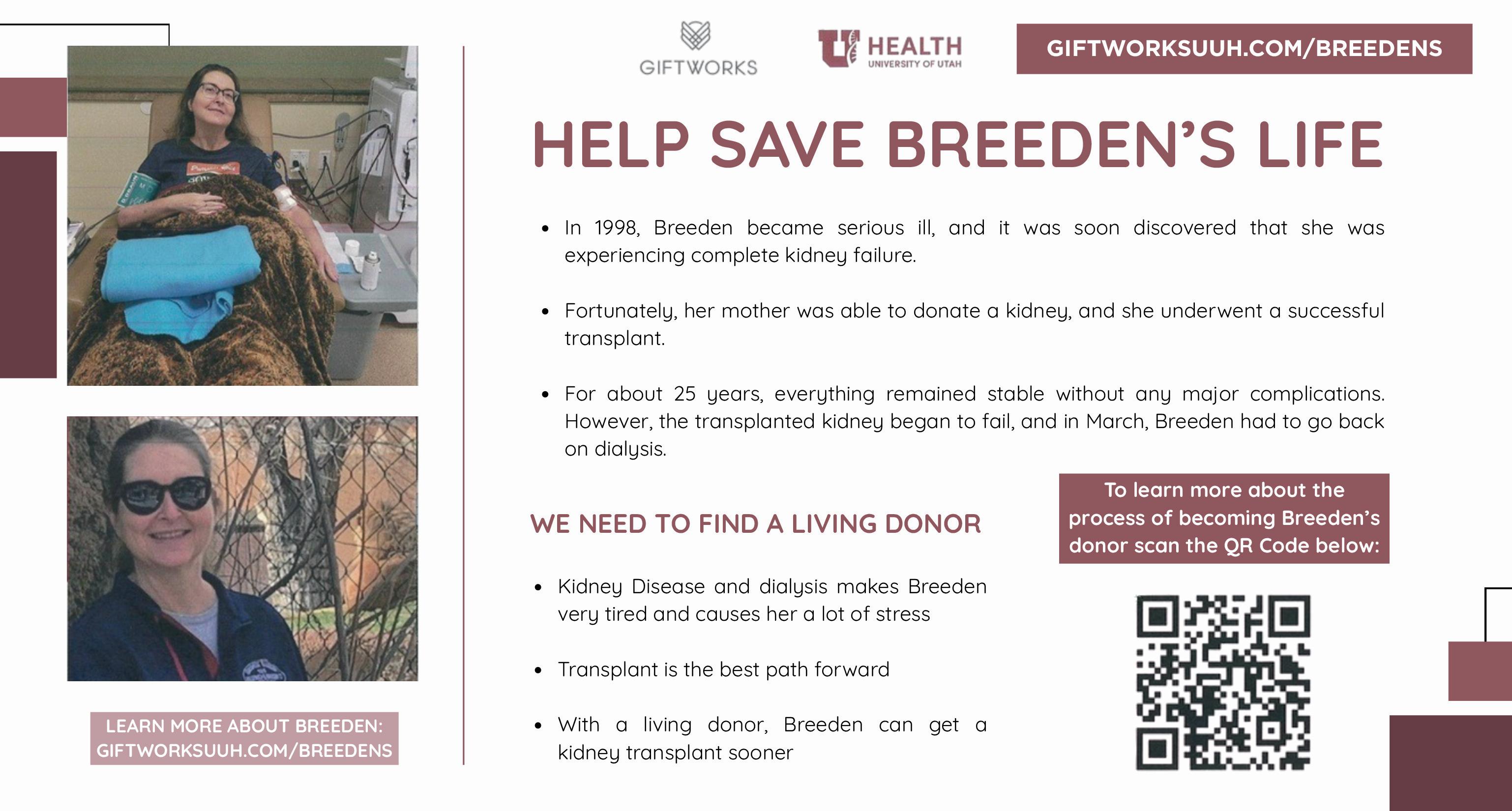
Traducido por DAVID ROMAN AROS Co-Editor
Por BRAYSON BROWN Editor asistente
Los equipos masculino y femenino de campo a través de la Universidad Estatal de Weber participaron en las Regionales de Montaña de la NCAA, y un Wildcat avanzó al Campeonato de la NCAA.
El equipo femenino quedó en el puesto número 13 de la clasificación general con una puntuación de 370 en la carrera de 6 km. La Universidad de Nuevo México quedó en primer lugar con una puntuación de 45. La mejor corredora de las Wildcats fue Hailey Low, que quedó en el puesto 40 de la carrera con un tiempo de 21:43,3. Lydia Felix quedó en el puesto 62 con un tiempo de 22:14,7. Para las Wildcats, esta fue su última carrera de la temporada.
En la categoría masculina, Nuevo México volvió a ser el equipo ganador, con una puntuación de 37 en la carrera de 10 km. Weber State quedó en séptimo lugar con una puntuación de 215. Nuevo México ocupó cuatro de
Editor-in-Chief
Nelly Hernandez Tejada nhernandeztejada@mail.weber.edu
Managing Editor
James Gordon jamesgordon@mail.weber.edu
Collaboration Editor
Bryce Odenthal bryceodenthal@mail.weber.edu
Design & Graphics Editor
Izabelle Cordeiro icorderio@mail.weber.edu
Photography Editor Anna Kuglar briannakuglar@mail.weber.edu
News Editor
Alfonso Rubio alfonsorubio@mail.weber.edu
los diez primeros puestos en la clasificación individual, con Habtom Samuel en primer lugar. El mejor resultado de los Wildcats lo obtuvo el corredor estrella Peter Visser, que quedó en octava posición en una carrera con más de 118 participantes. Visser hizo un tiempo de 30:13,1, solo 0,7 segundos por detrás del séptimo clasificado, Collins Kiprotich, de Nuevo México. Jacob Peterson fue el siguiente de los Wildcats, en el puesto 44, con un tiempo de 31:29,0.
Visser representará ahora a Weber State en el mayor escenario de los Campeonatos de la NCAA, que tendrán lugar el 22 de noviembre en Columbia, Misuri. Este es el tercer año consecutivo que participará en la carrera.
El equipo de cross country de Weber State University toma el lugar numero 13 en el Mountain Region Championships.
Sports Editor
Gavin Nelson gavinnelson1@mail.weber.edu
Asst. Sports Editor Brayson Brown braysonbrown@mail.weber.edu
Culture Editor Jared Mitchell jaredmitchell@mail.weber.edu
Chief Copy Editor Mindy Brown mindybrown1@mail.weber.edu
Translation & Asst. Chief Copy Editor Tomas Quintero Uribe tquinterouribe@mail.weber.edu
Translation Co-Editor Victoria Hernandez victoriahernandez1@mail.weber.edu
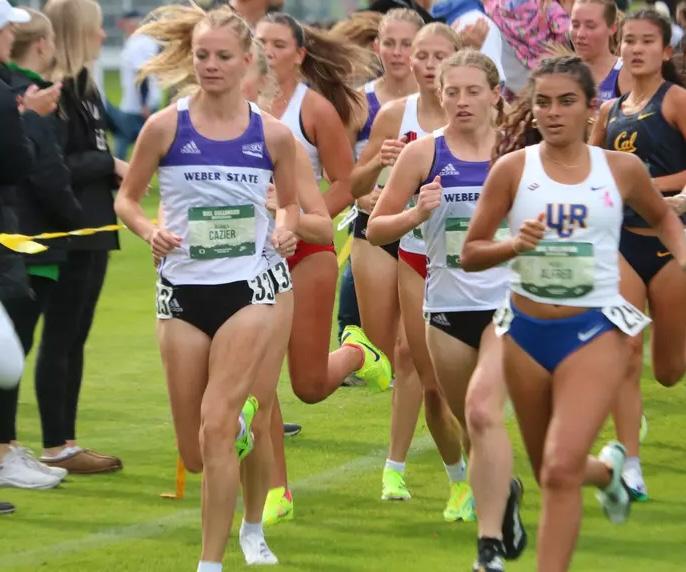
Translation Co-Editor
David Roman Aros davidromanaros@mail.weber.edu
Business Manager Robert Steedley robertsteedley@weber.edu
Adviser
Jean Norman jeannorman@weber.edu
The Signpost is a student publication, written, edited and drafted by Weber State University students. Student fees fund the printing of this publication. Opinions or positions voiced are not necessarily endorsed by the university. The Signpost reserves the right to edit for reasons of space and libel and to refuse to print any letters. Letters should be submitted online to thesigpost@ weber.edu and read letter to the Editor in the subject box. Letters should not exceed 350 words.
